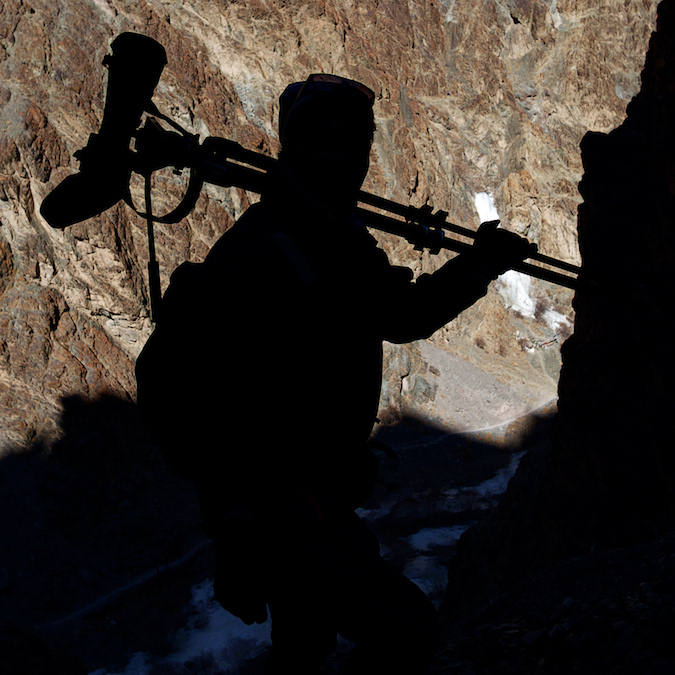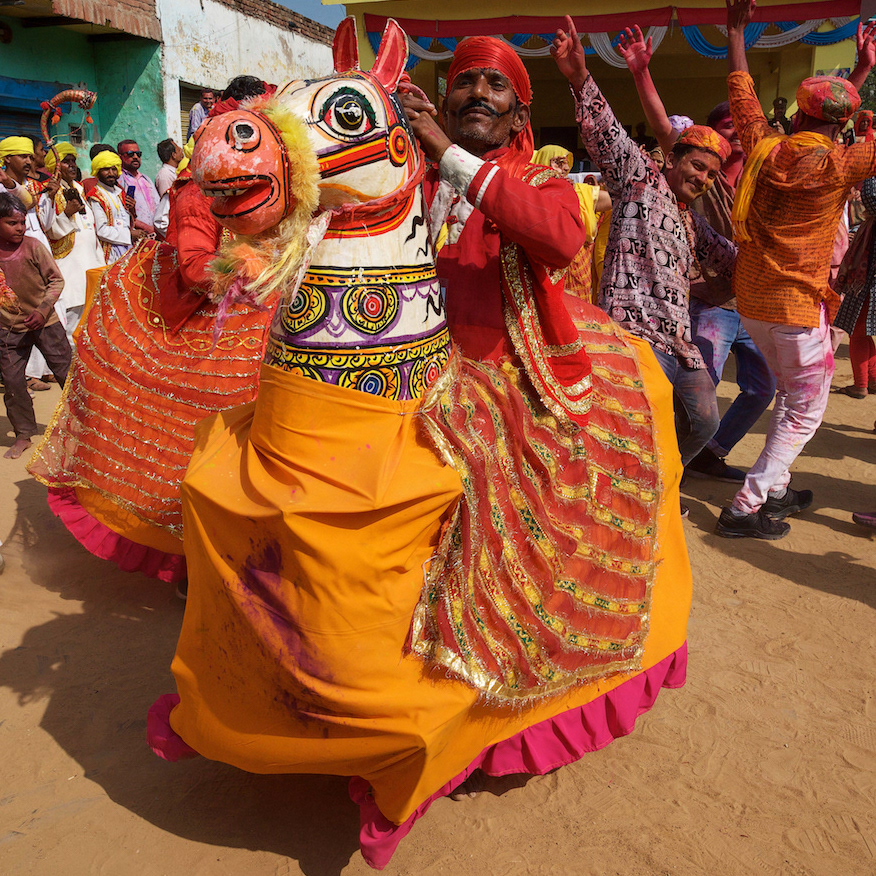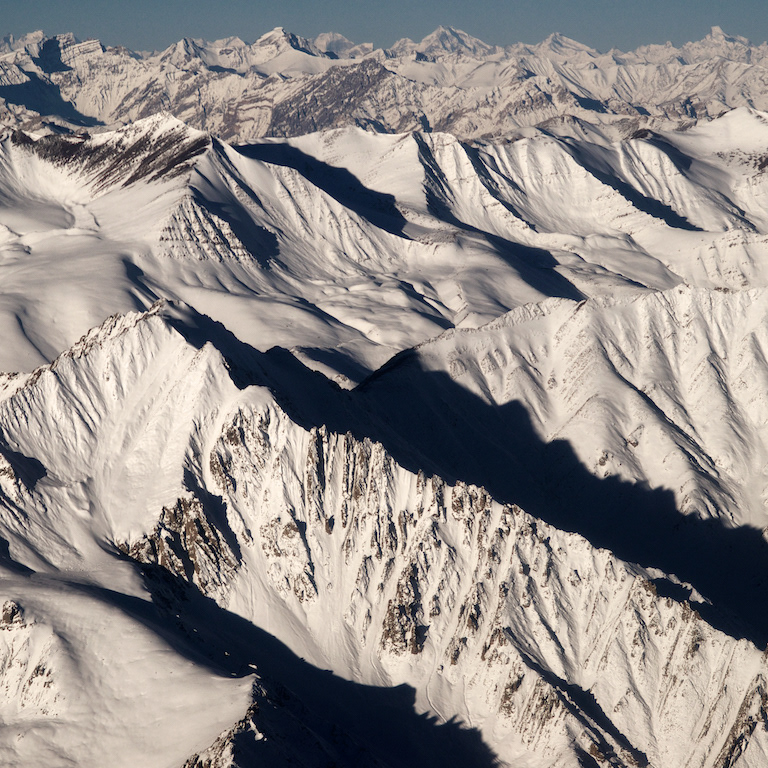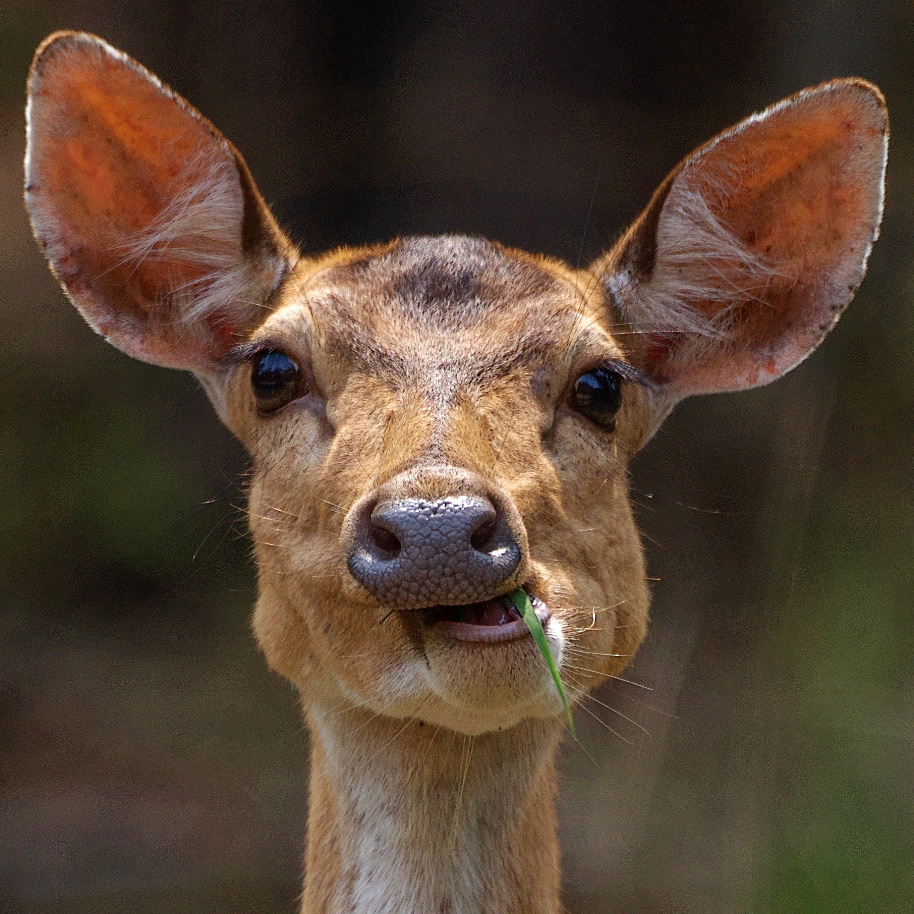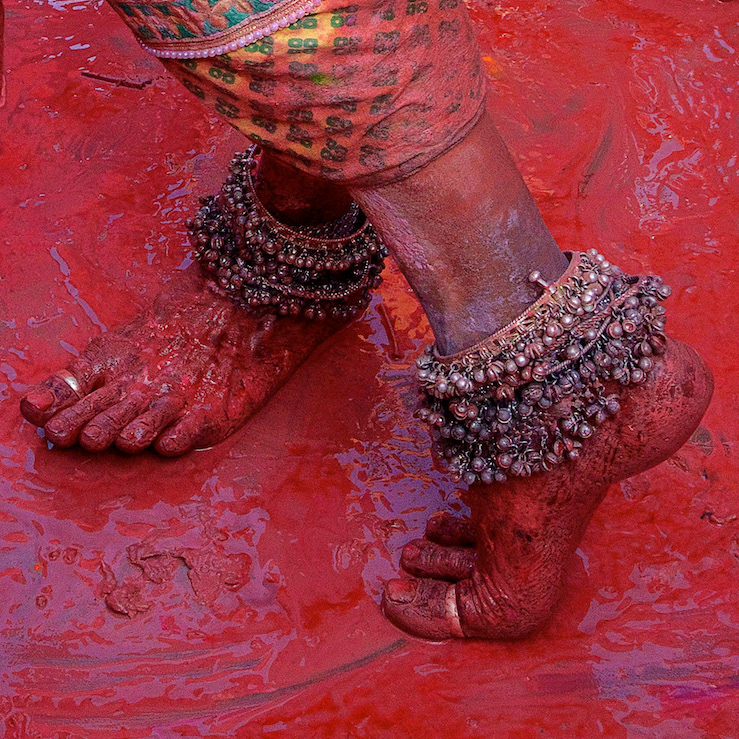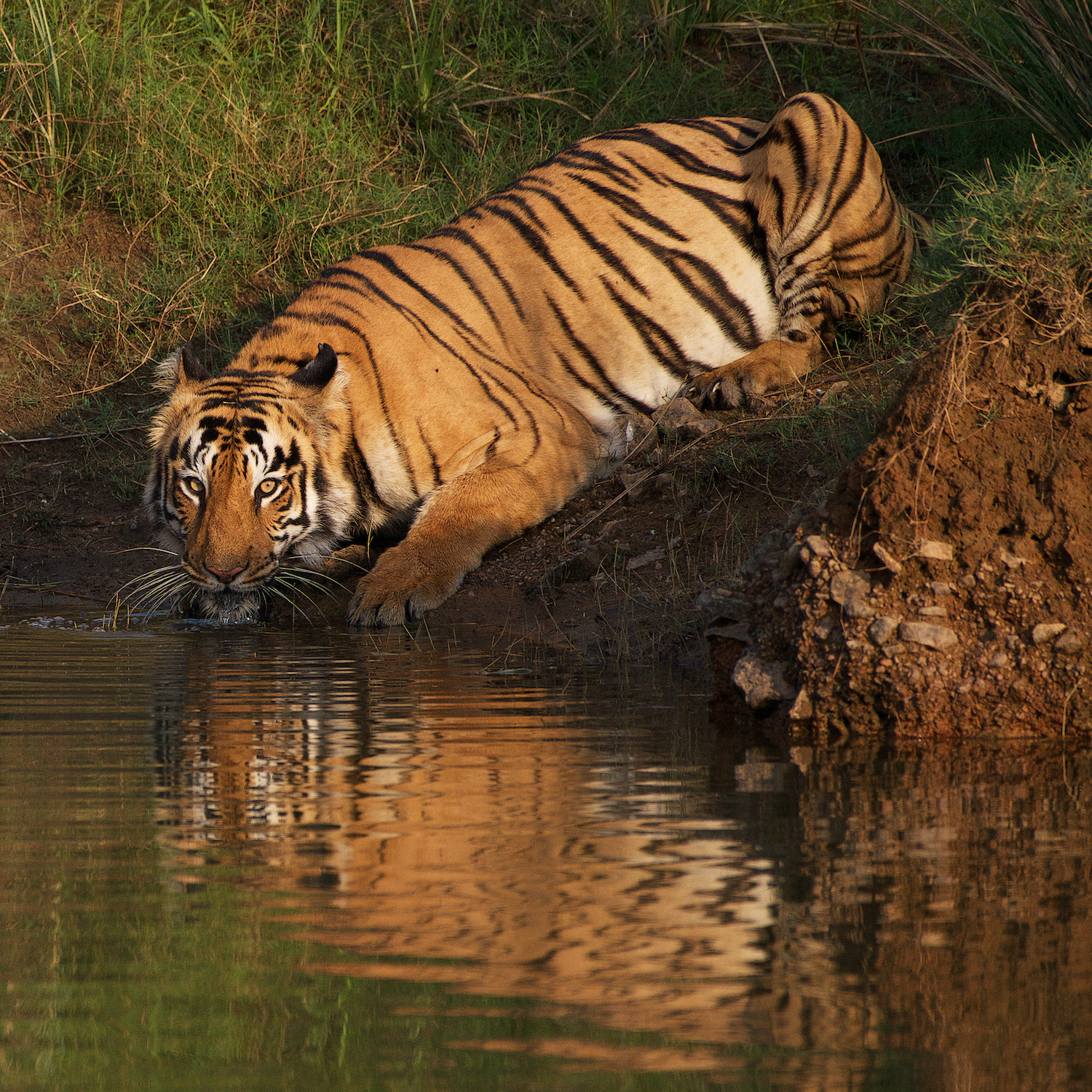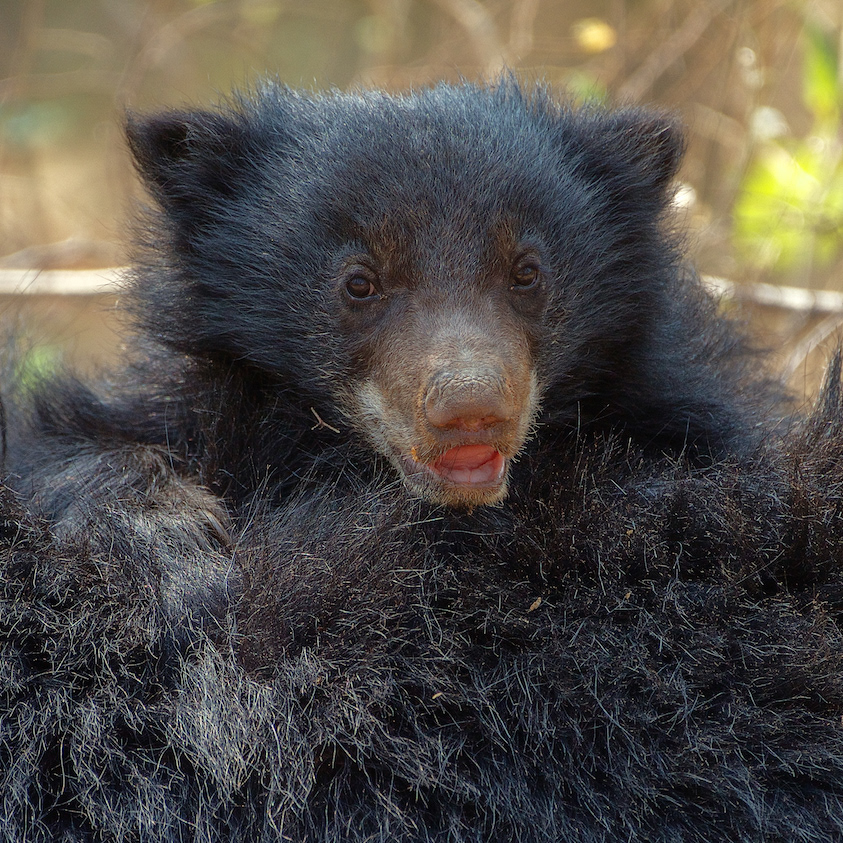Mountain Gorillas
Bwindi Impenetrable Forest - Uganda
Mountain Gorillas can be found in highland forests that cross the borders between the Democratic Republic of the Congo in Central Africa, and Uganda and Rwanda in East Africa.
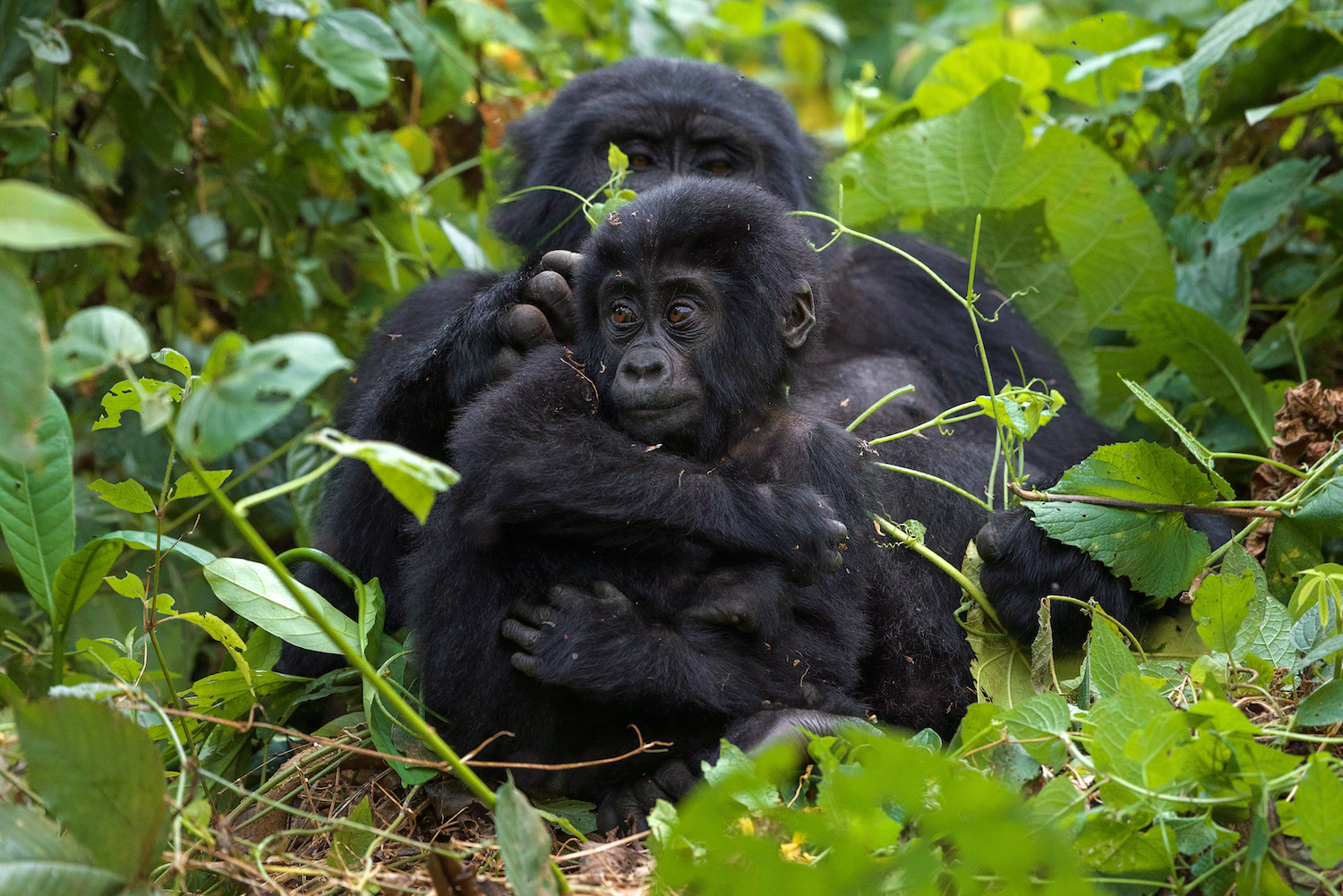
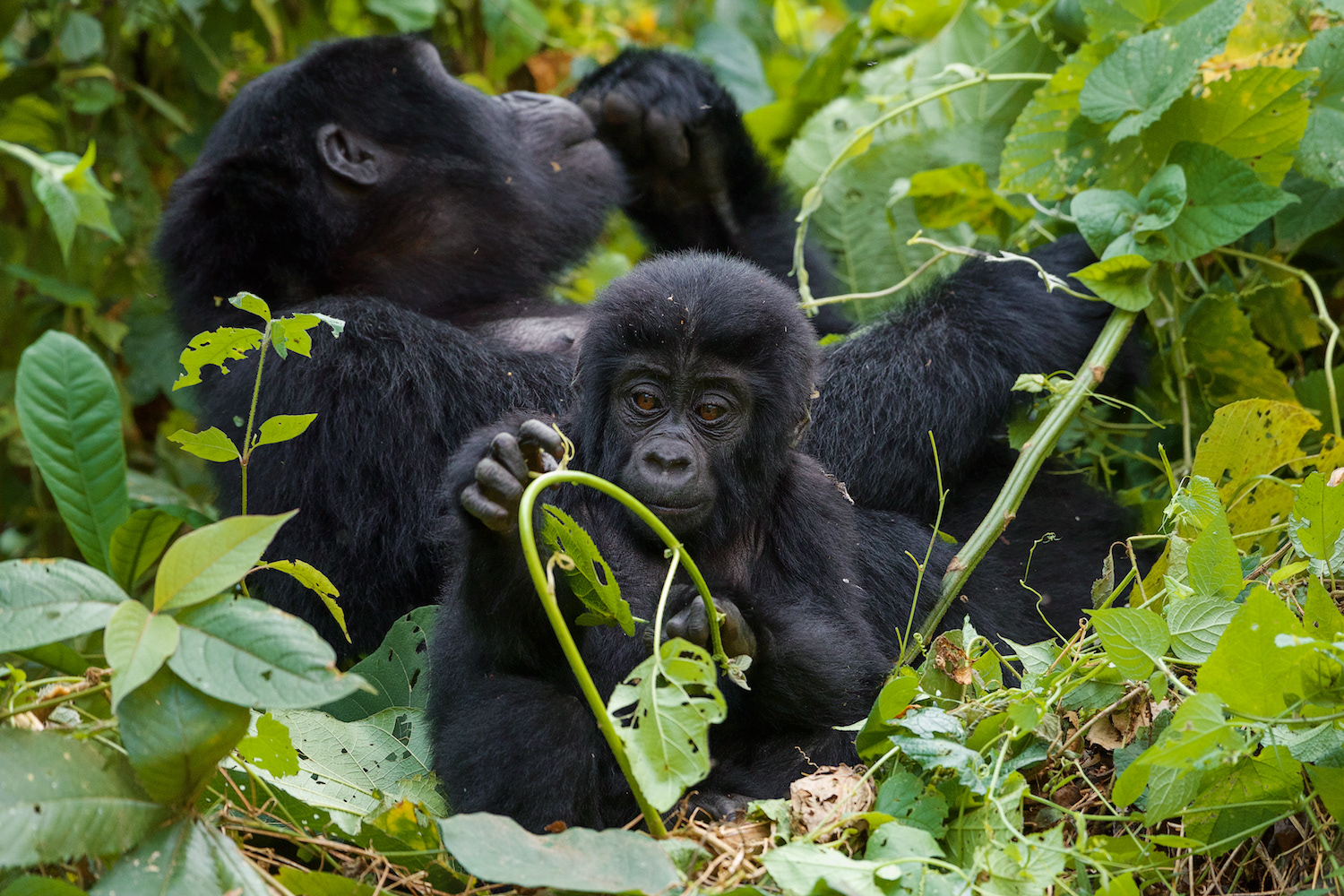
There are two main species of Gorillas - the Western and the Eastern. Each has a lowland and an upland sub-species with the Mountain Gorilla being a sub-species of the Eastern Gorilla. The Mountain Gorilla is considered critically endangered with just over 1,000 individuals currently remaining. Mainly living high-up within the densely forested areas in the equatorial parts of Central and East Africa, they are the largest of the great apes and share about 98% of their DNA with humans.
Trekking for Mountain Gorillas
In July 2022 we had the privilege of trekking for Mountain Gorillas in Bwindi Impenetrable National Park which has four tracking regions - Buhoma, Ruhija, Rushaga and Nkuringothe. We were allocated Gorilla permits for the Rushaga sector in the southern part of Bwindi. This sector has a good number of Gorilla families which have been habituated and have dedicated trackers keeping a close eye on their every movement. After a general briefing we were split into small groups and allocated a Forest Ranger and a specific family of Gorillas to visit. Depending on the location of the family, the trek can take up to four hours! We were very lucky in that we came across our family after about 45 minutes. Once sighted, we had the privilege of spending an hour in the company of these beautiful animals.
We spent our time with the Tindatine family which currently consists of around seven individuals and is led by the silverback Tindatine. This family is not yet officially recognised as it has only recently split from its formal family, Bweza. Although the individuals occasionally return to the Bweza group, the Tindatine family is becoming increasingly independent. When we met up with them, they were enjoying breakfast!
Banshekura (11 years old, born 21st June 2011) and her young son Rubya (4 years old, born 6th September 2018) enjoy eating leaves for breakfast in the thick forest undergrowth. The young Gorilla is distracted from eating by our presence and watches us with fascination. An incredible experience and a moment I'll always treasure.
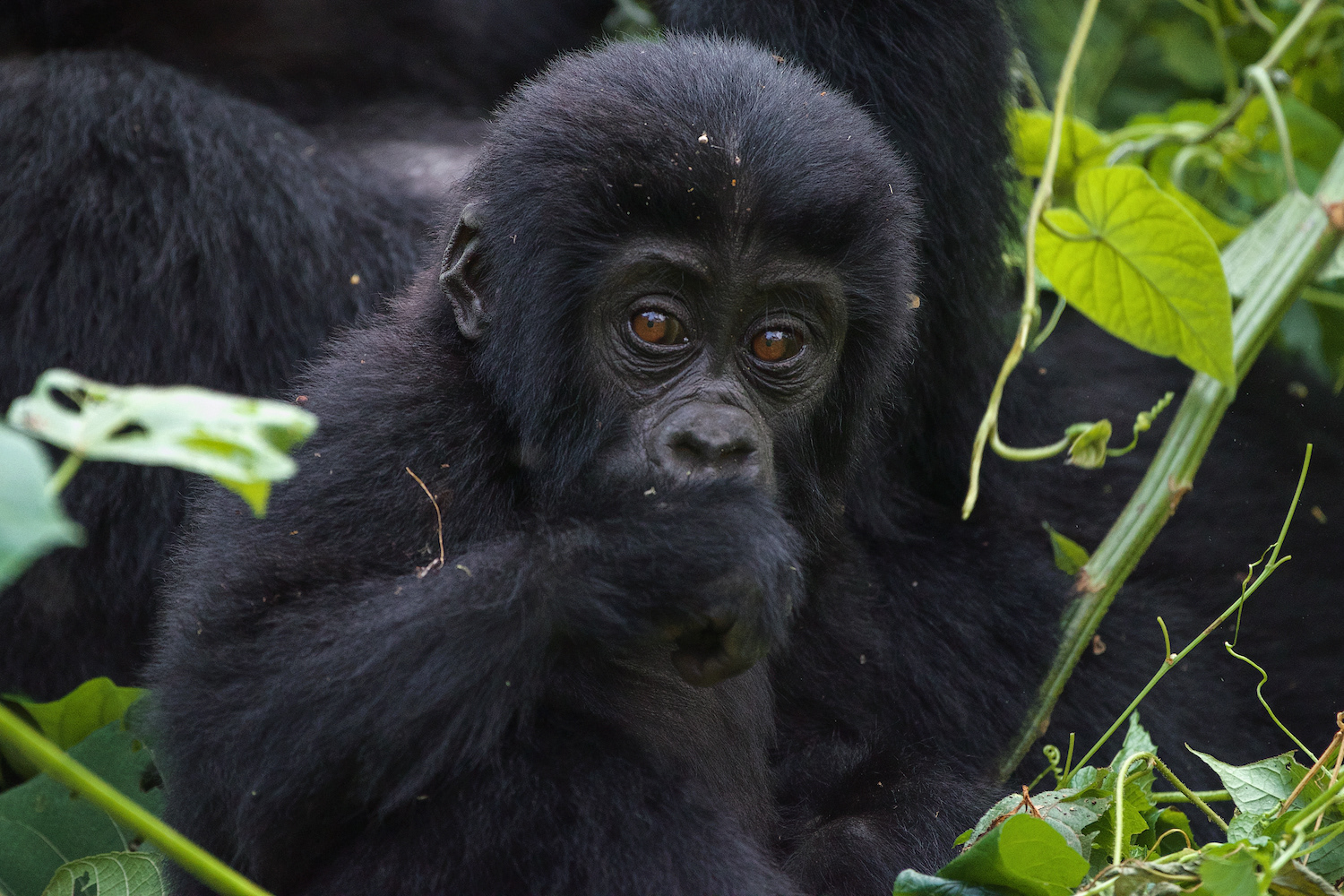
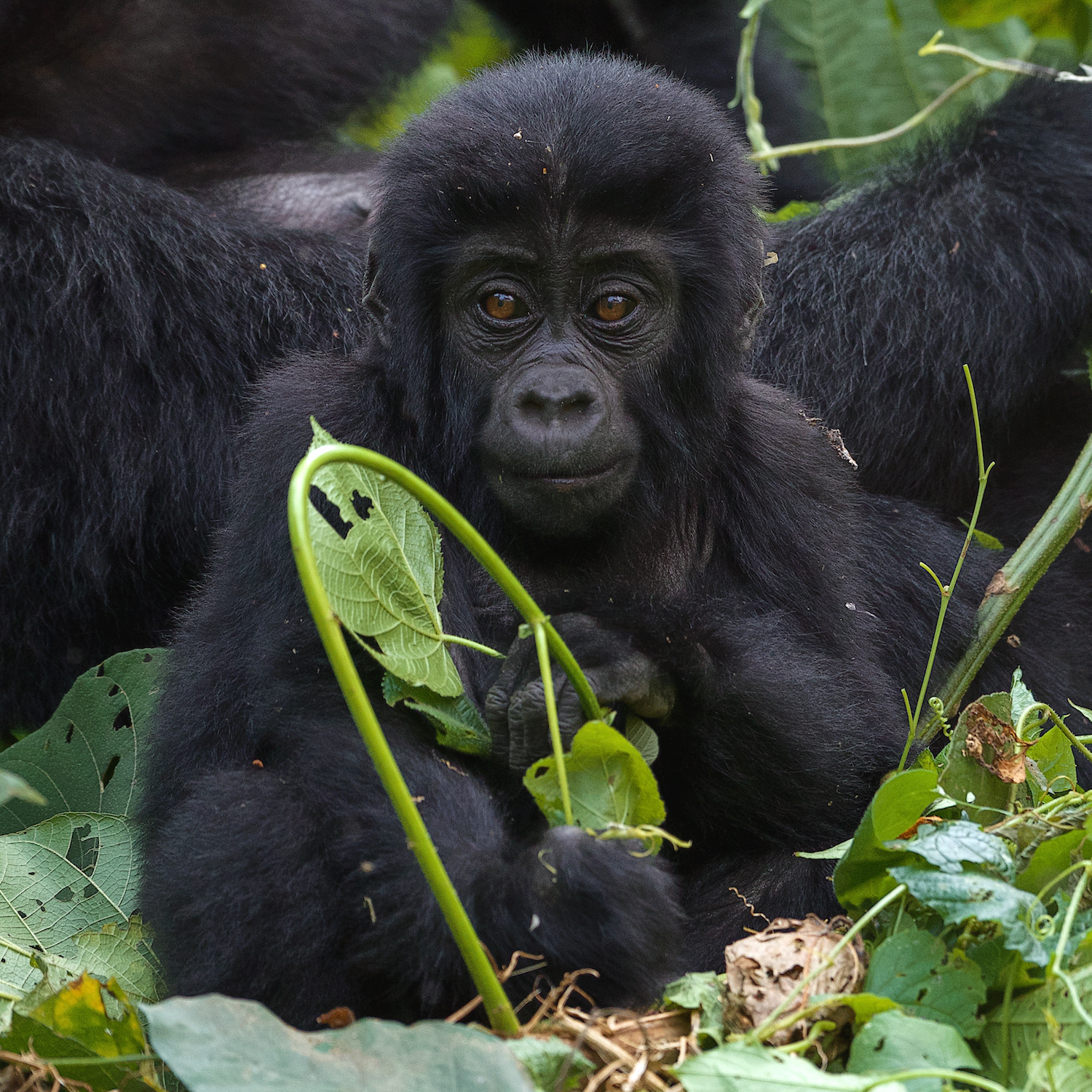
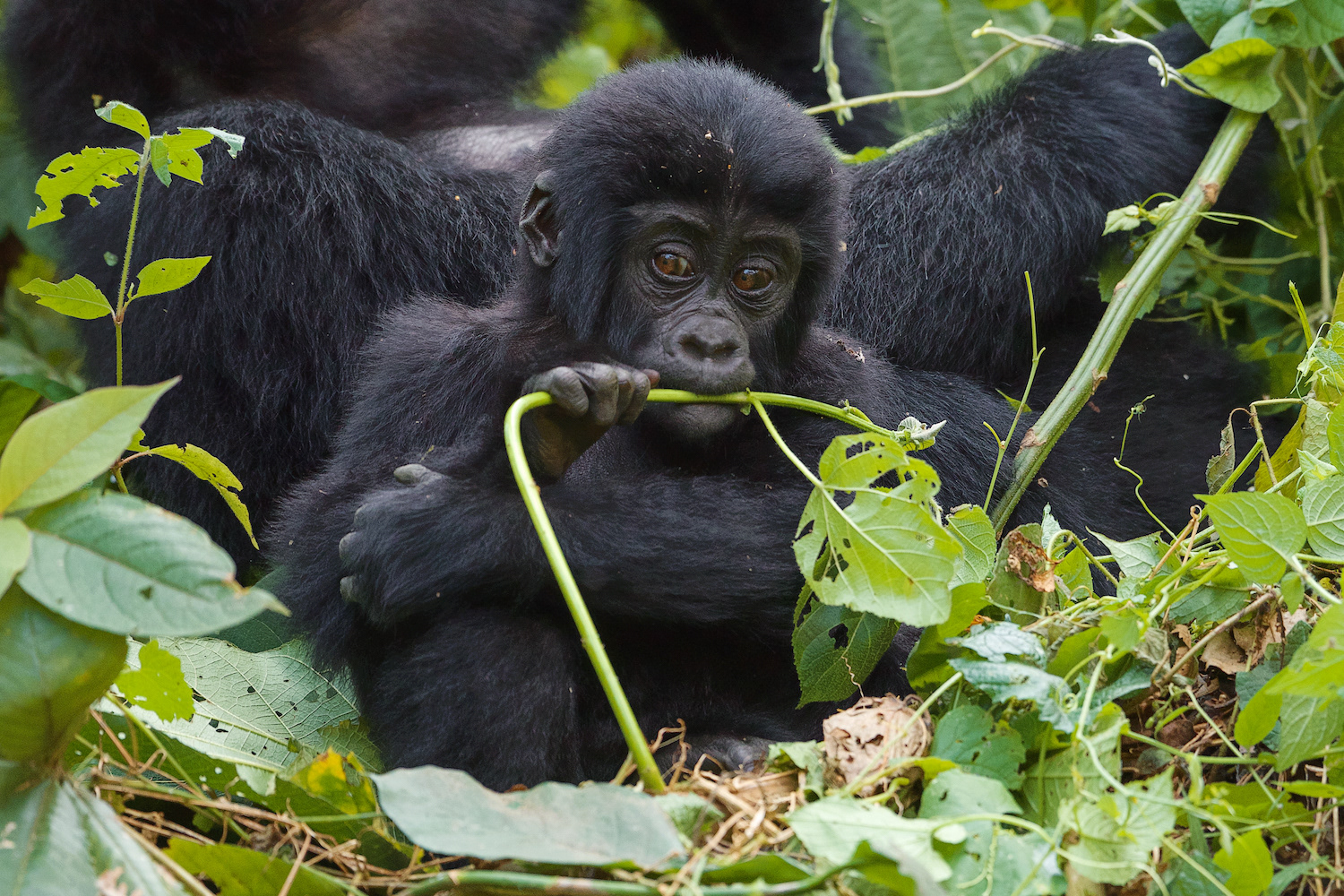
Rubya was named after the place in the forest were he was born.
The dominant Silverback, Tindatine, is 20 years old, born1st January 2002. His name means "fearless". Tindatine is busy feeding on leaves. He is extremely well-hidden, with the huge bulk of his frame difficult to see as he he sits amongst the thick foliage.

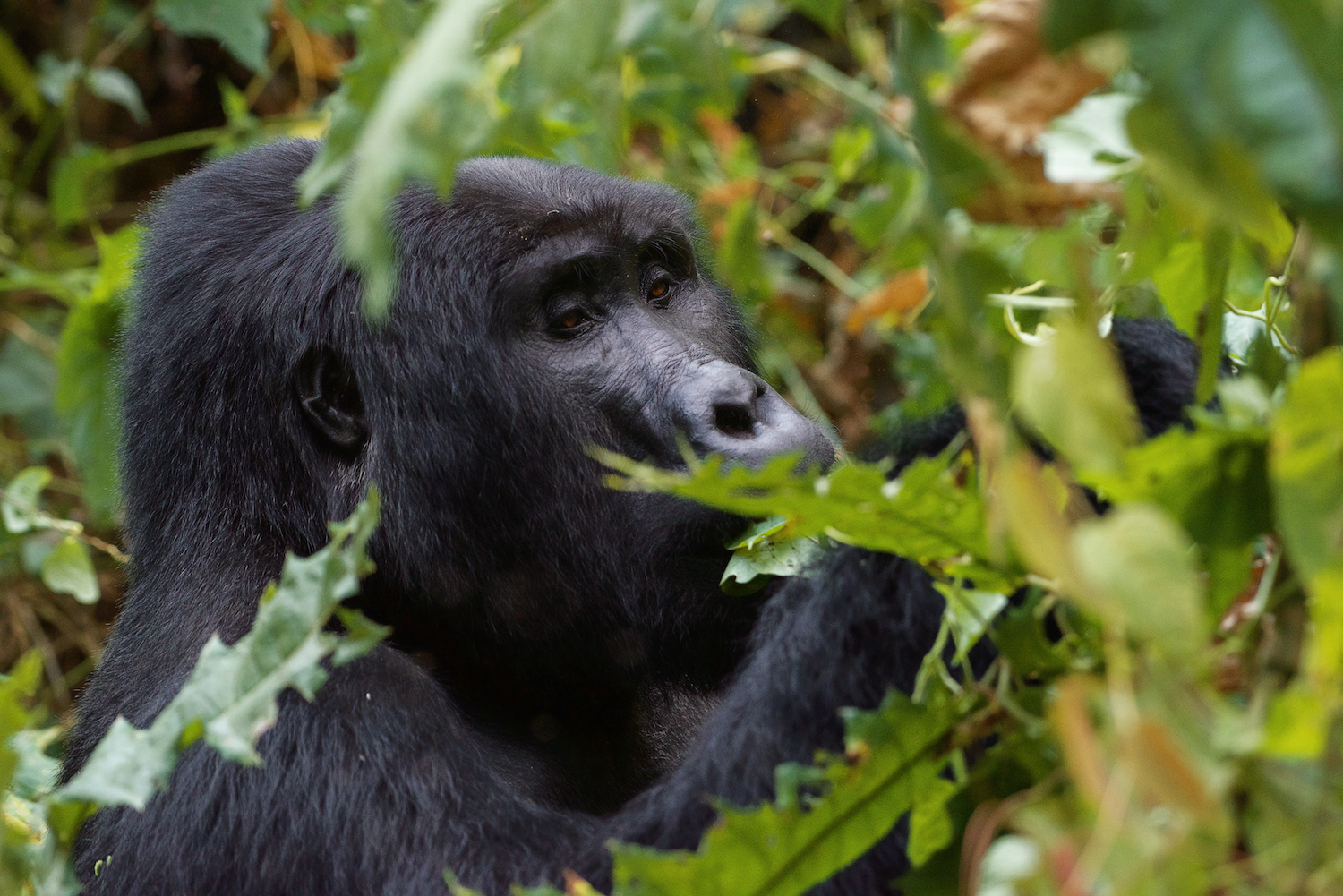
Bwindi Impenetrable Forest is an area of dense ancient rainforest dating back over 25,000 years making it one of Africa's oldest forests. Located in the highest parts of the Kigezi highlands, at the edge of the Great Rift Valley in the Kanungu District of south-western Uganda, it covers an area of 330 kilometres and has a biologically diverse habitat. Altitude ranges from1,106 metres to 2,607 metres.
Bwindi Impenetrable Forest National Park was established in1991 and was granted UNESCO World Heritage status in 1994. It is the home to more than half of the world’s rare and critically endangered Mountain Gorillas.
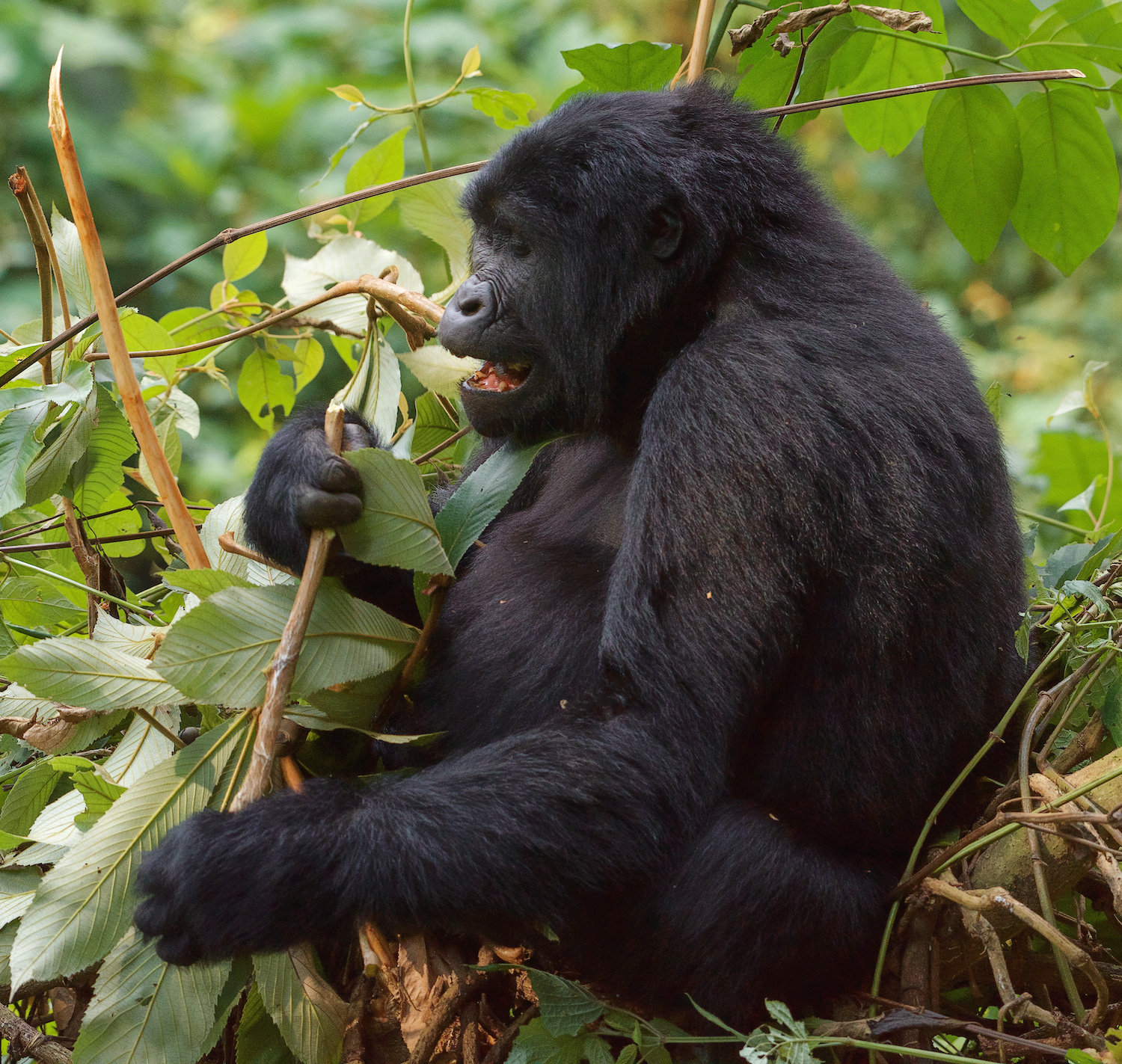
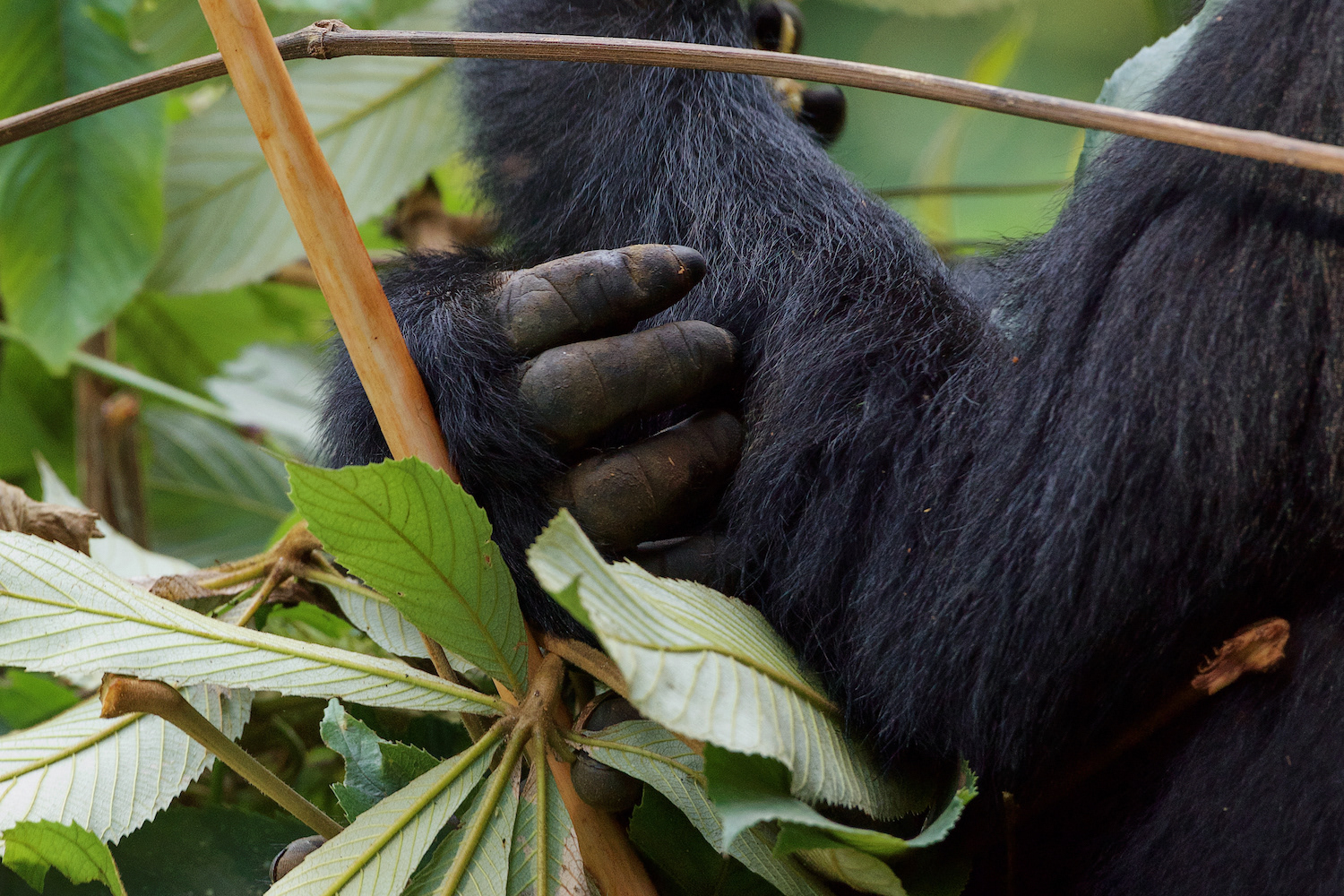
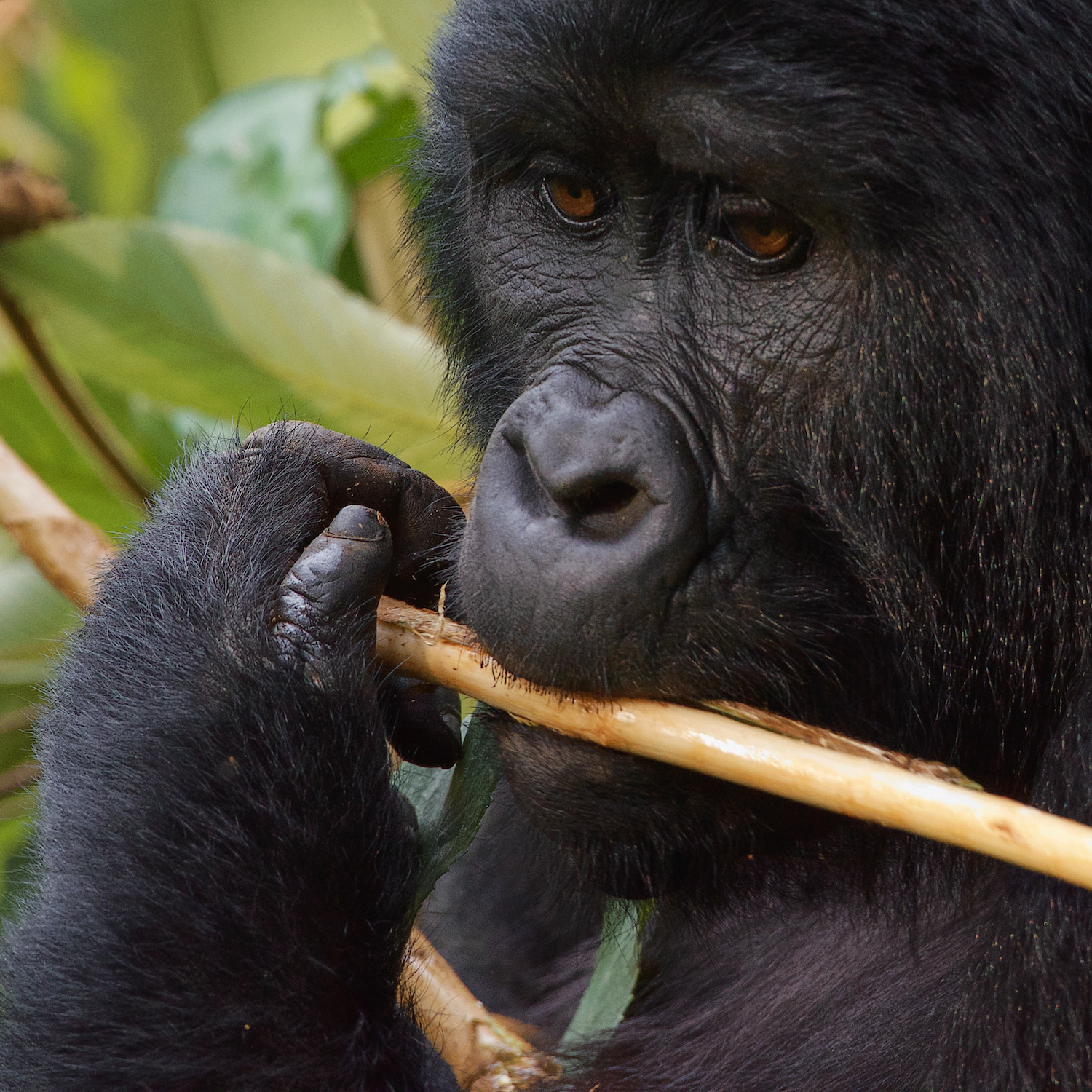
The adult female Mwiza, which means "beautiful", is 32 years old, born on 1st January 1990.

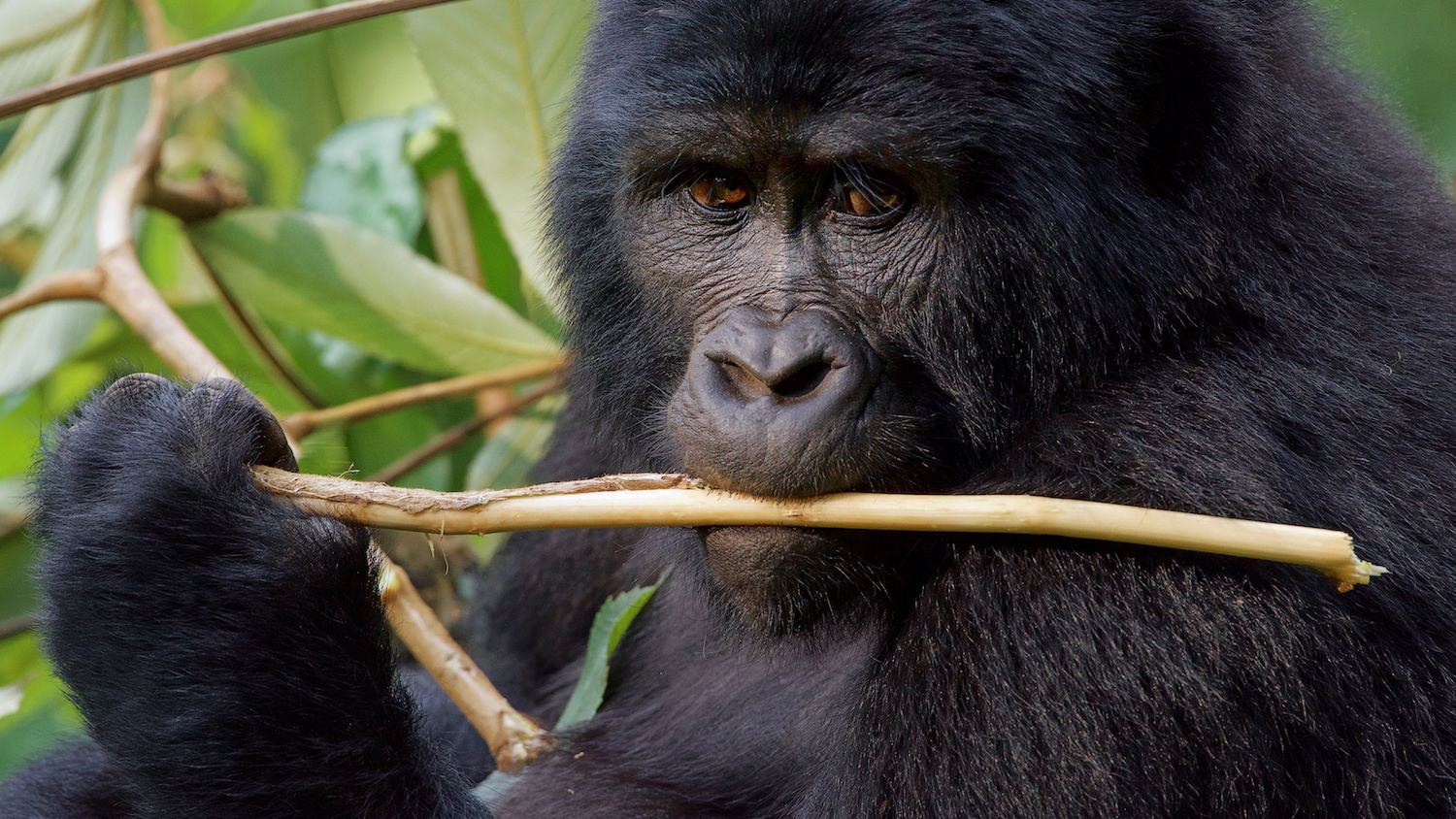

Mountain Gorillas are primarily herbivores and mainly eat fruits, leaves, thistles, stinging nettles and bamboo shoots. However, they also have an appetite for termites and ants which provide them with protein and other nutrients.
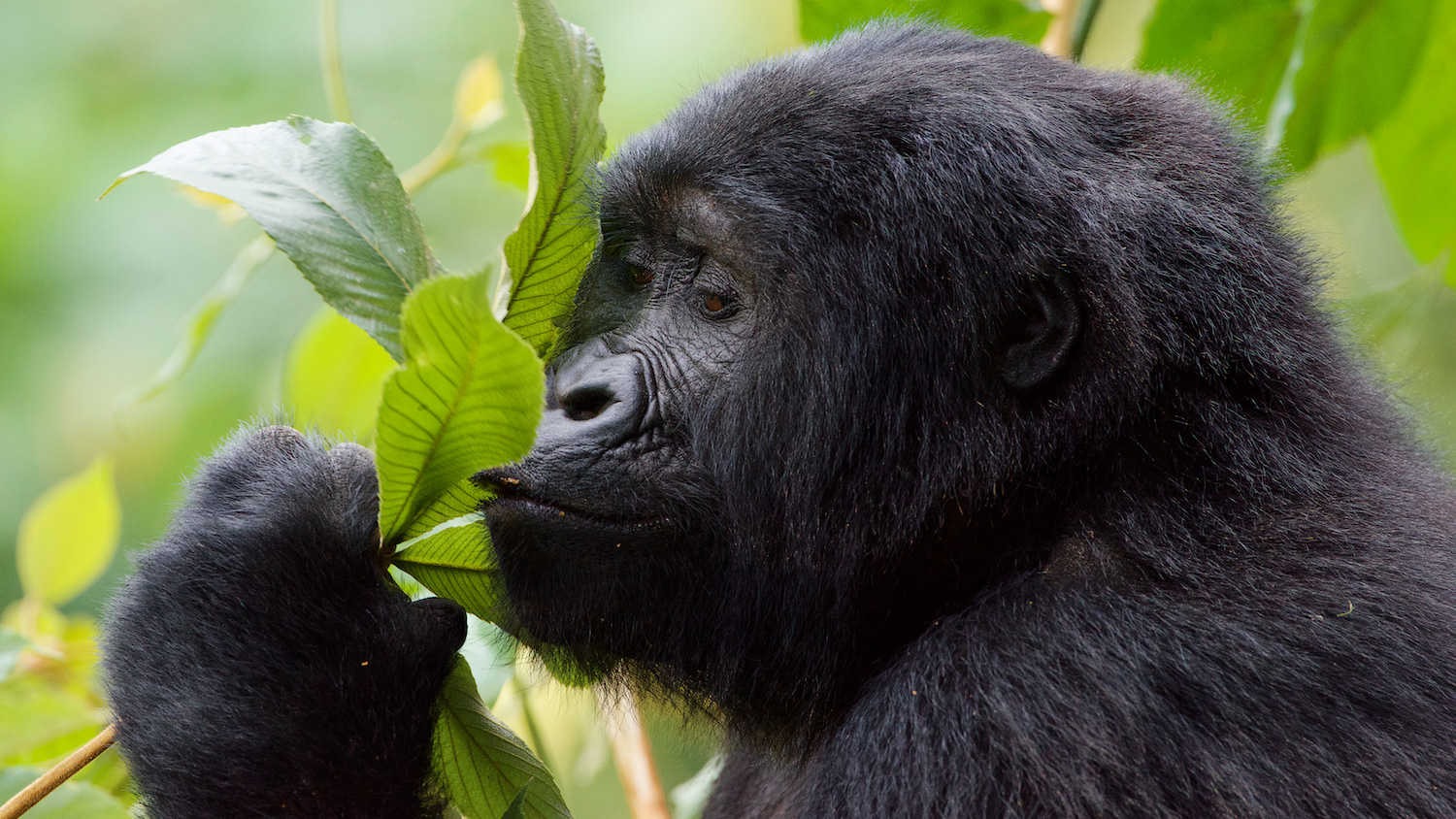
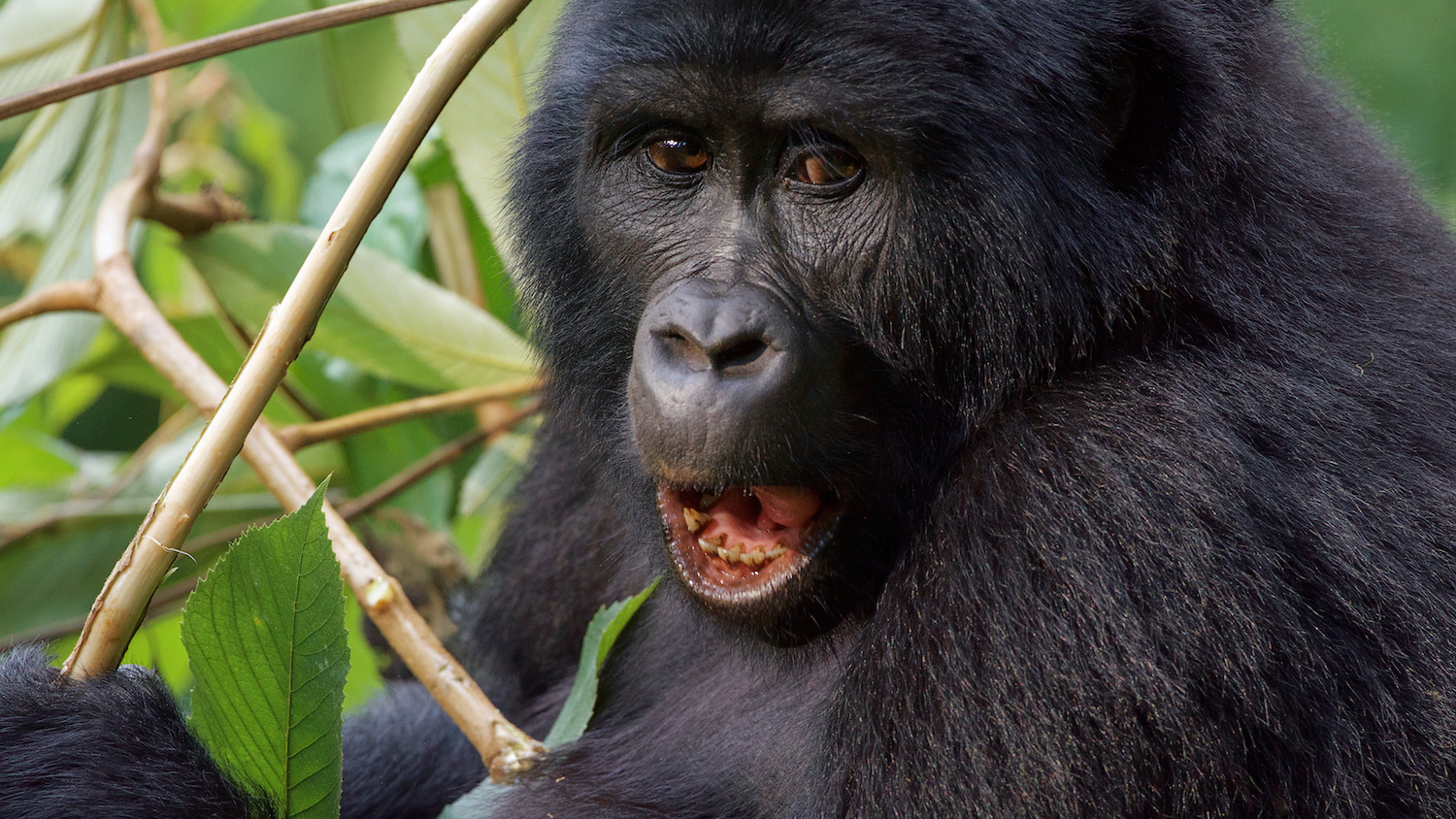
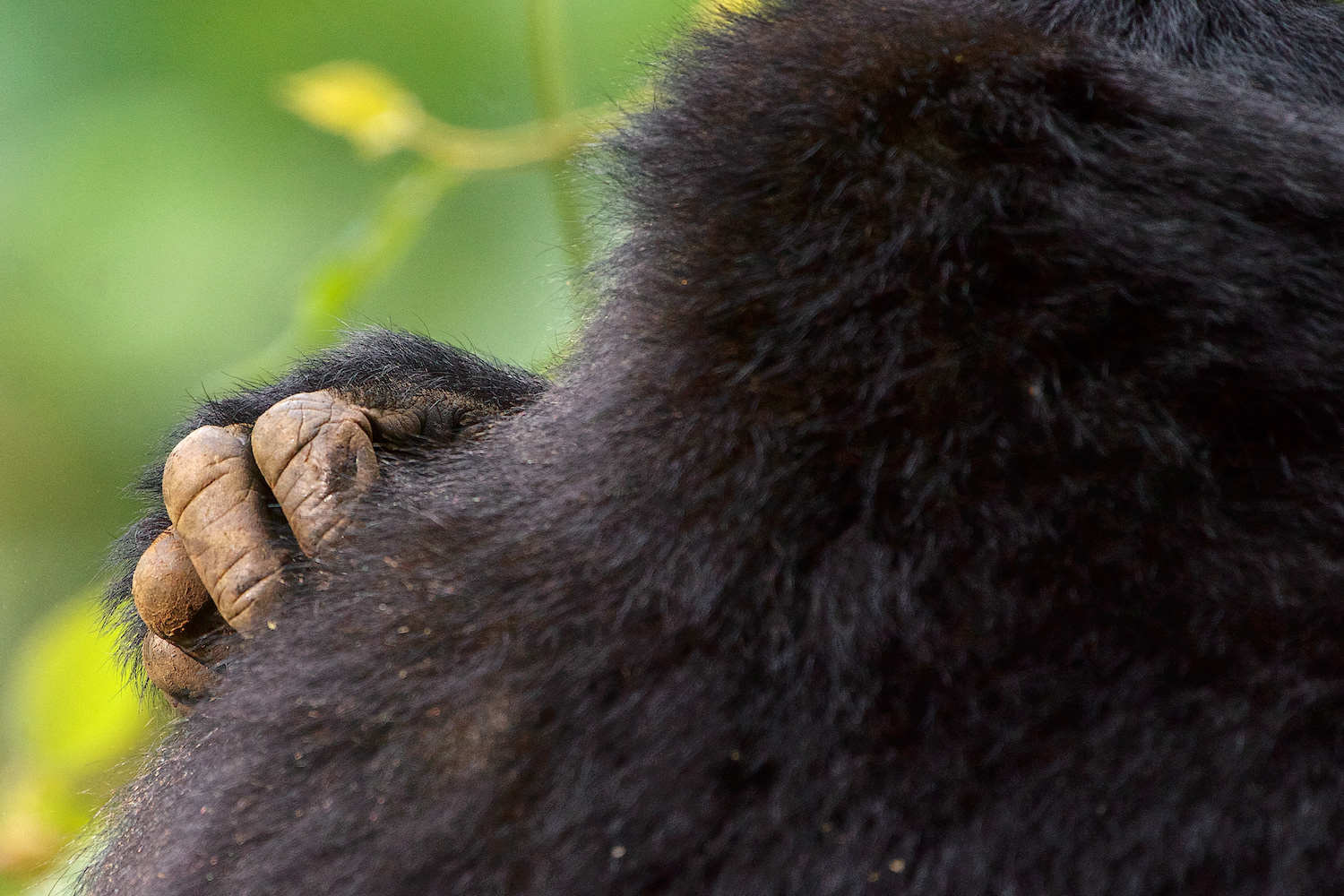
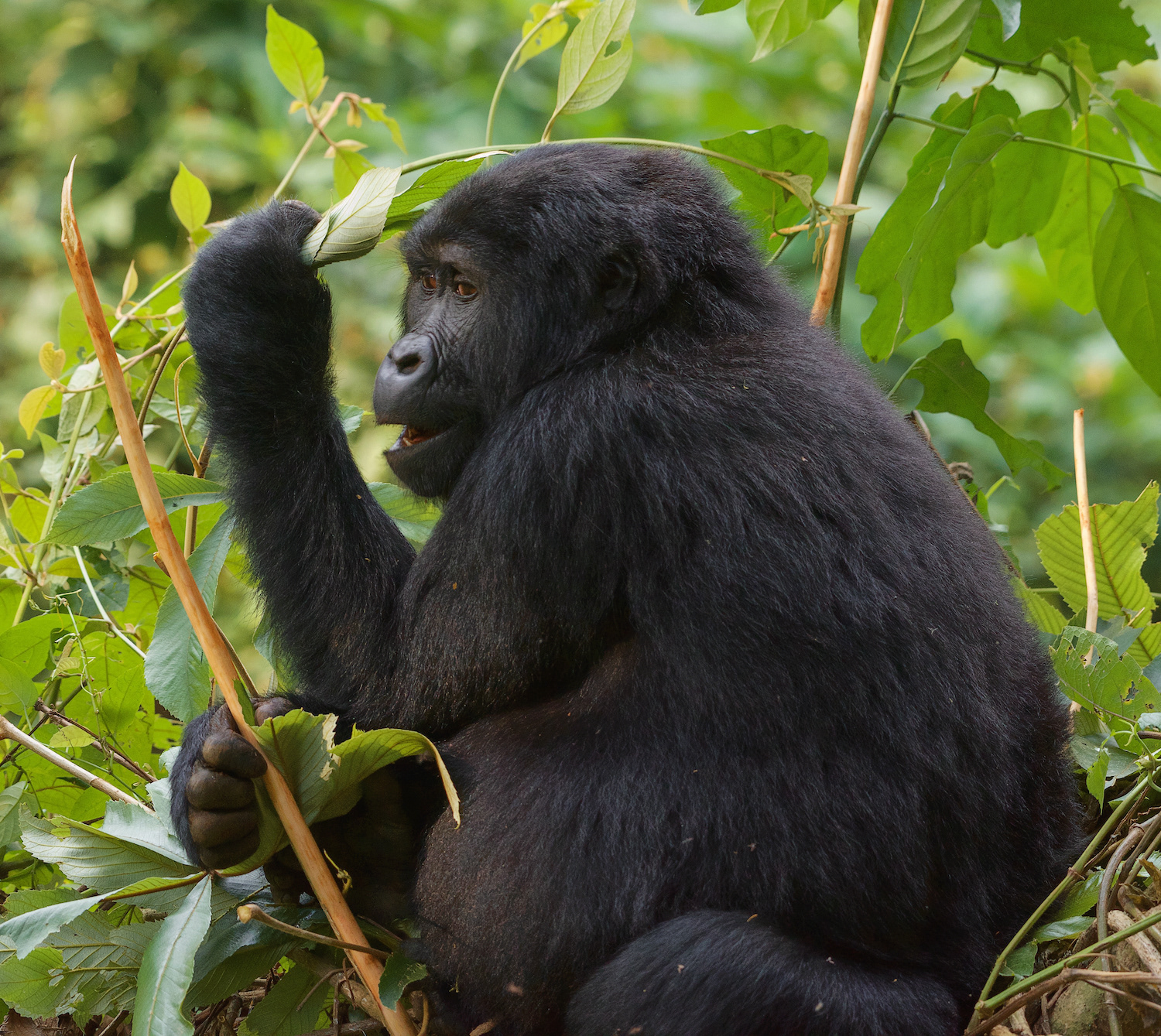
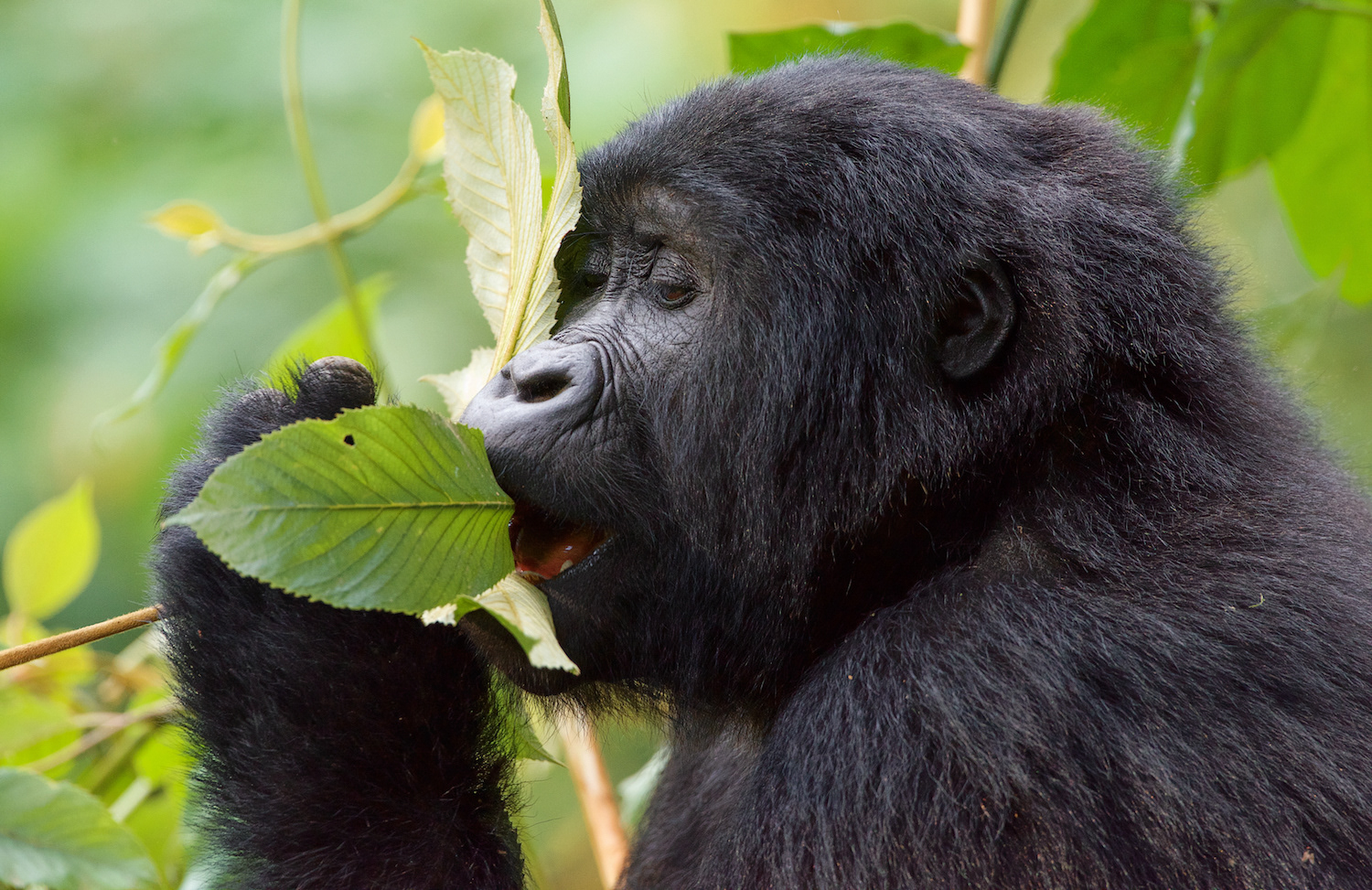
Our first encounter with a Mountain Gorilla in its natural habitat was amazing!


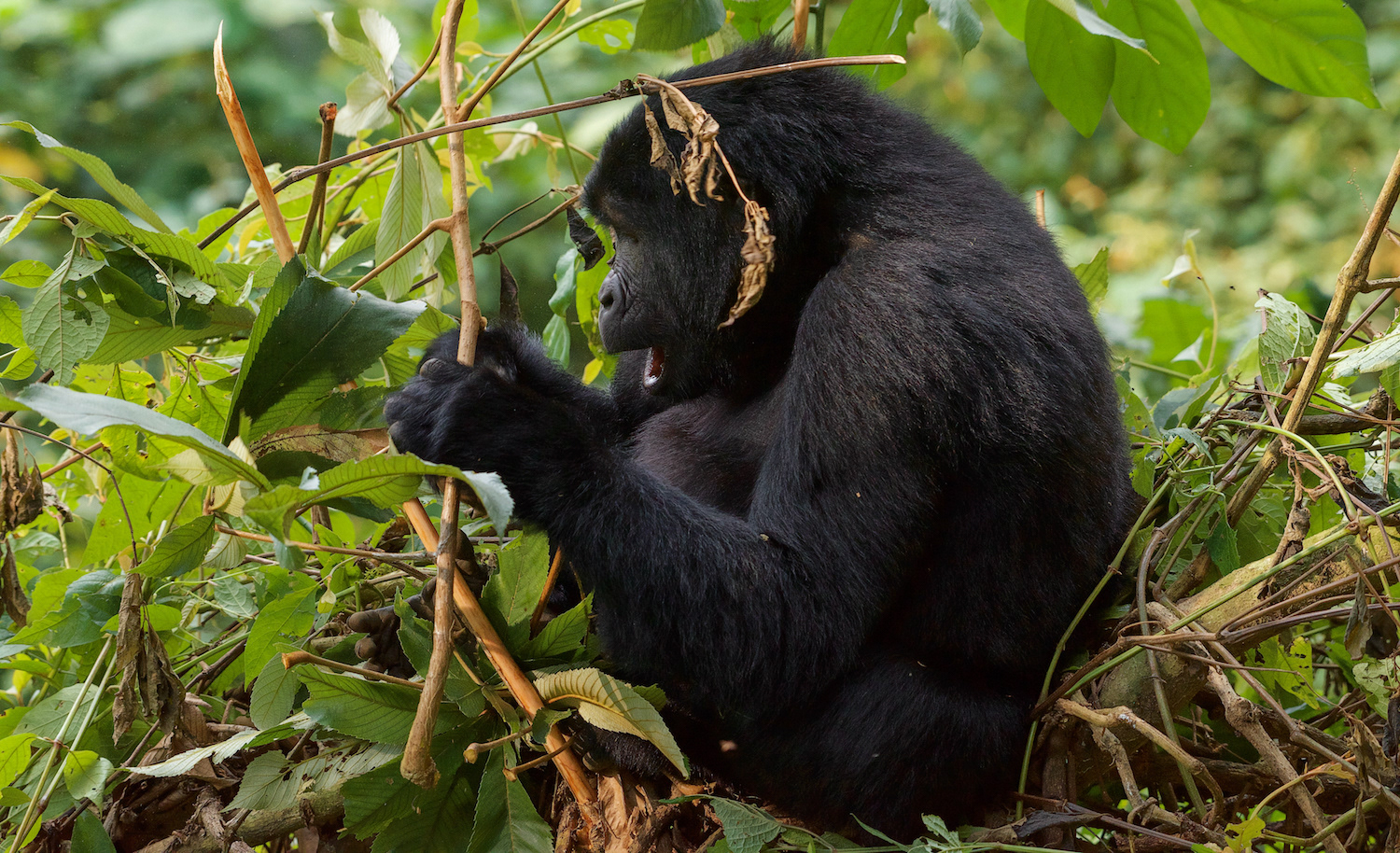
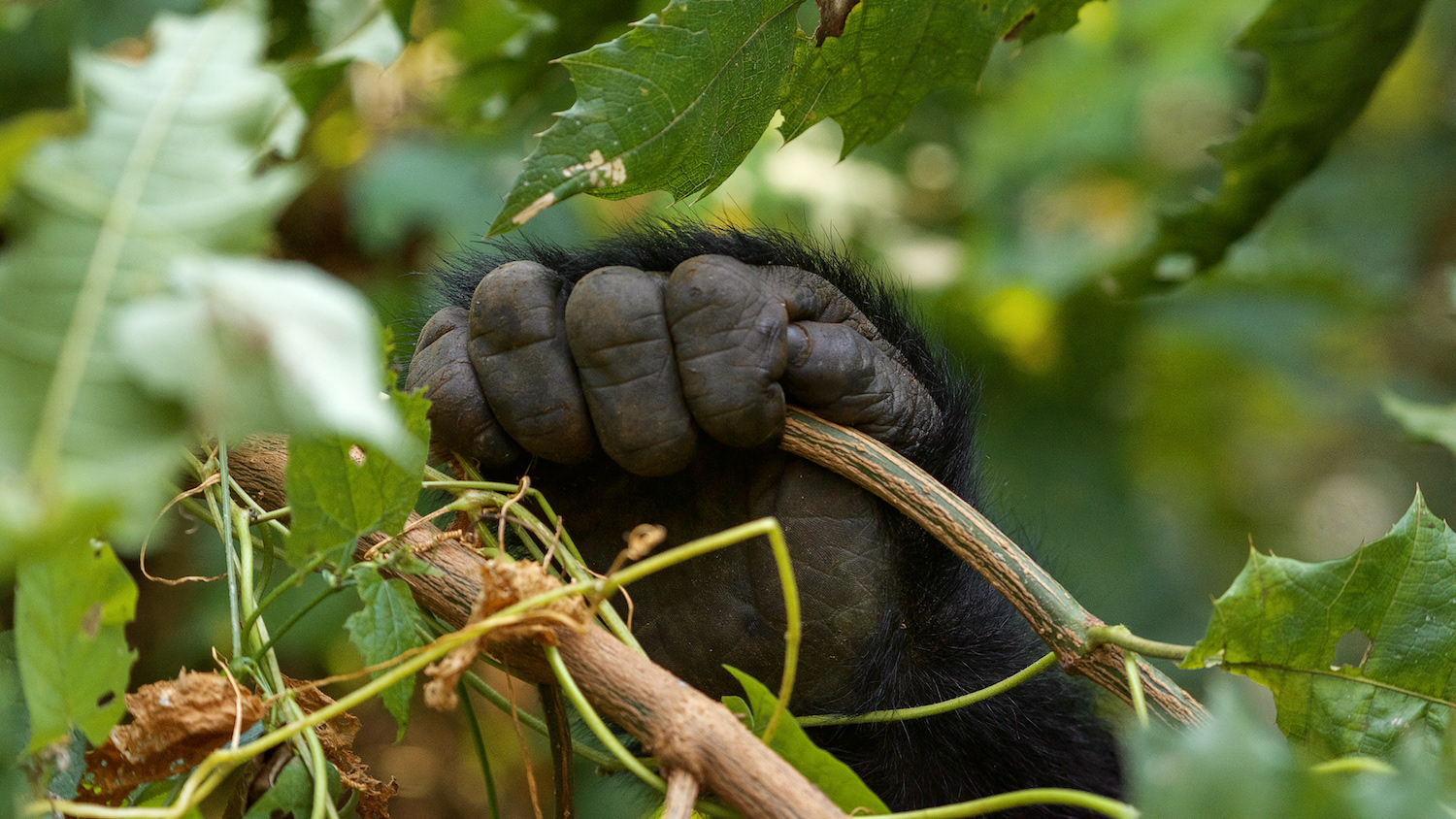


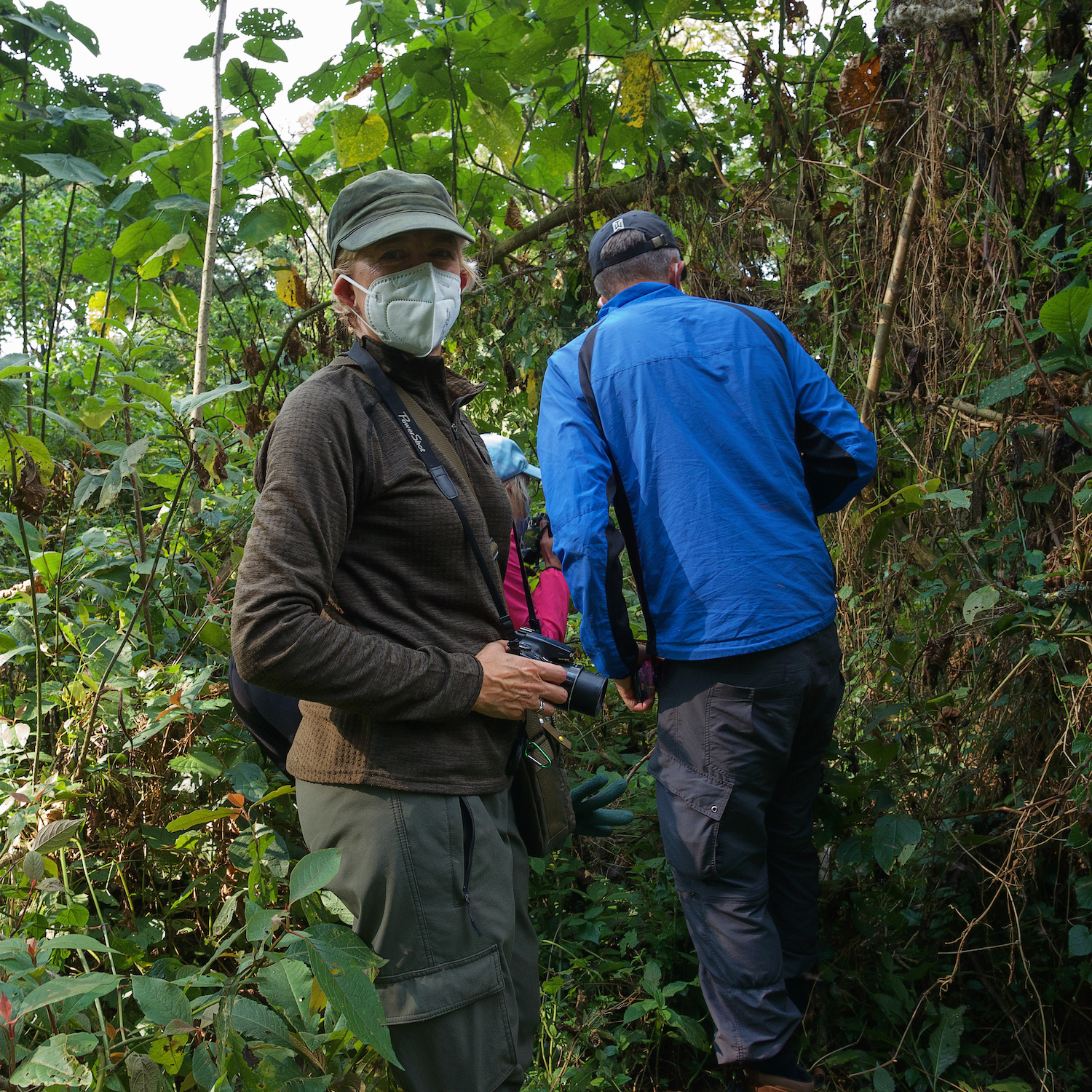
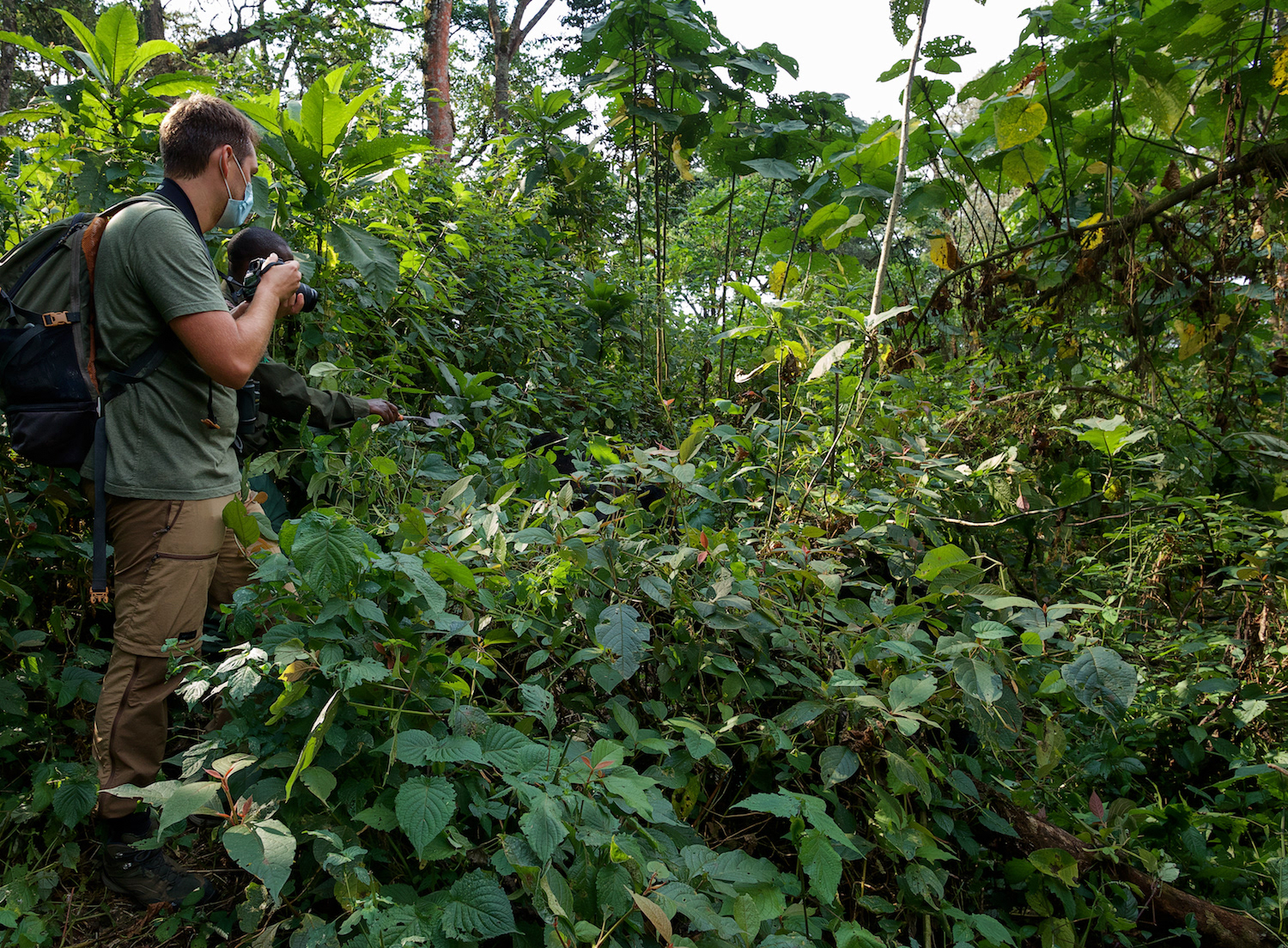
Gorilla trekking through the thick dense vegetation within Bwindi can be challenging. The word "Bwindi" means "darkness" and you can also see why the forest is regarded as "Impenetrable".
Gorillas can be very difficult to spot especially amongst the dense foliage, however, the expert forest rangers and trackers are on hand to point them out.
It's an amazing experience to have a huge Gorilla peering back at you through the undergrowth. When they disappear and then suddenly reappear in a different place, you begin to understand how thick and dense the forest is.
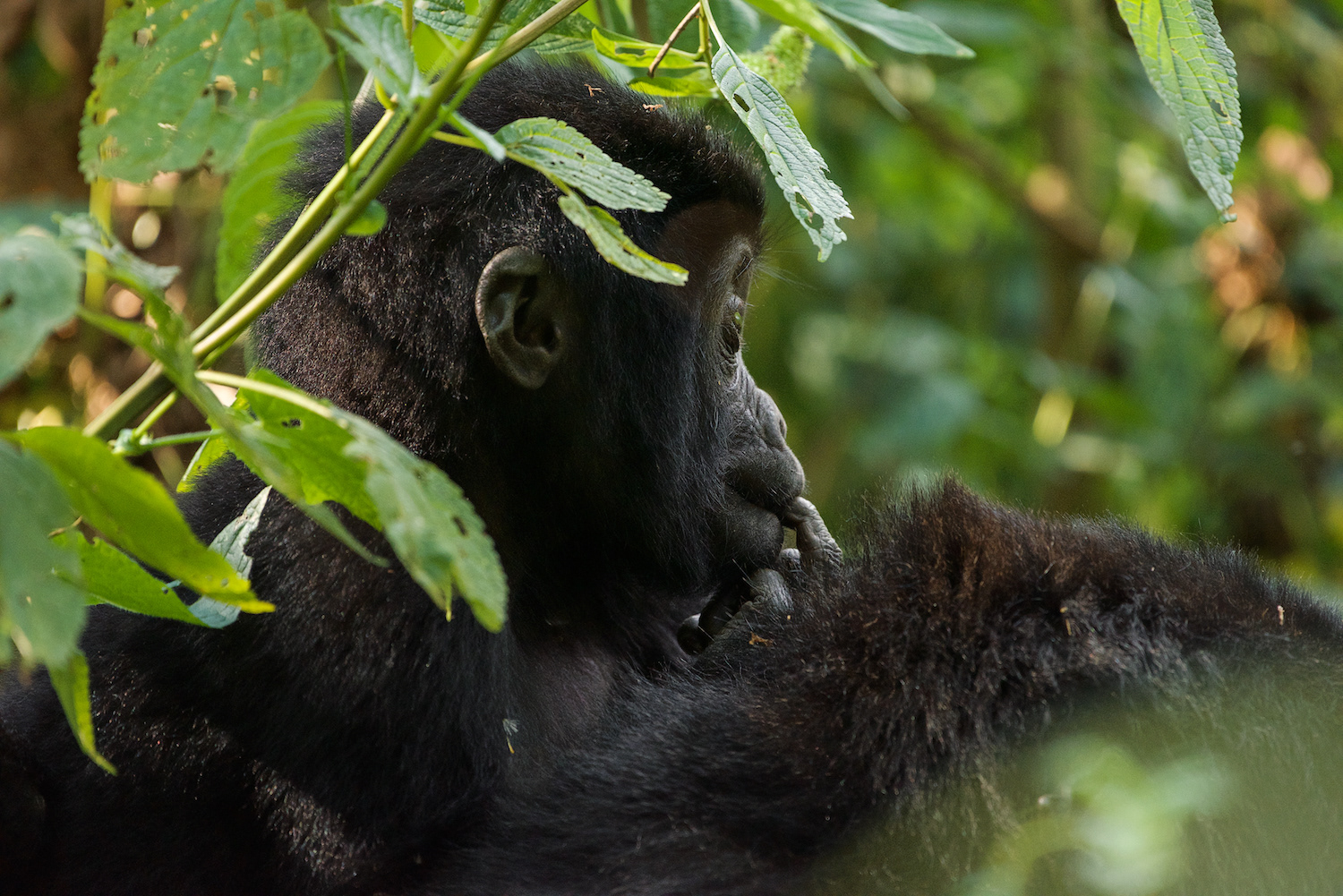

The adult female known as Bakunzi (28 years old born 1st January1994) with her one year old daughter, Nyundo (born 11 April 2021). The name Bakunzi means "friendly".
Young Nyundo hitches a ride on her mother's back.
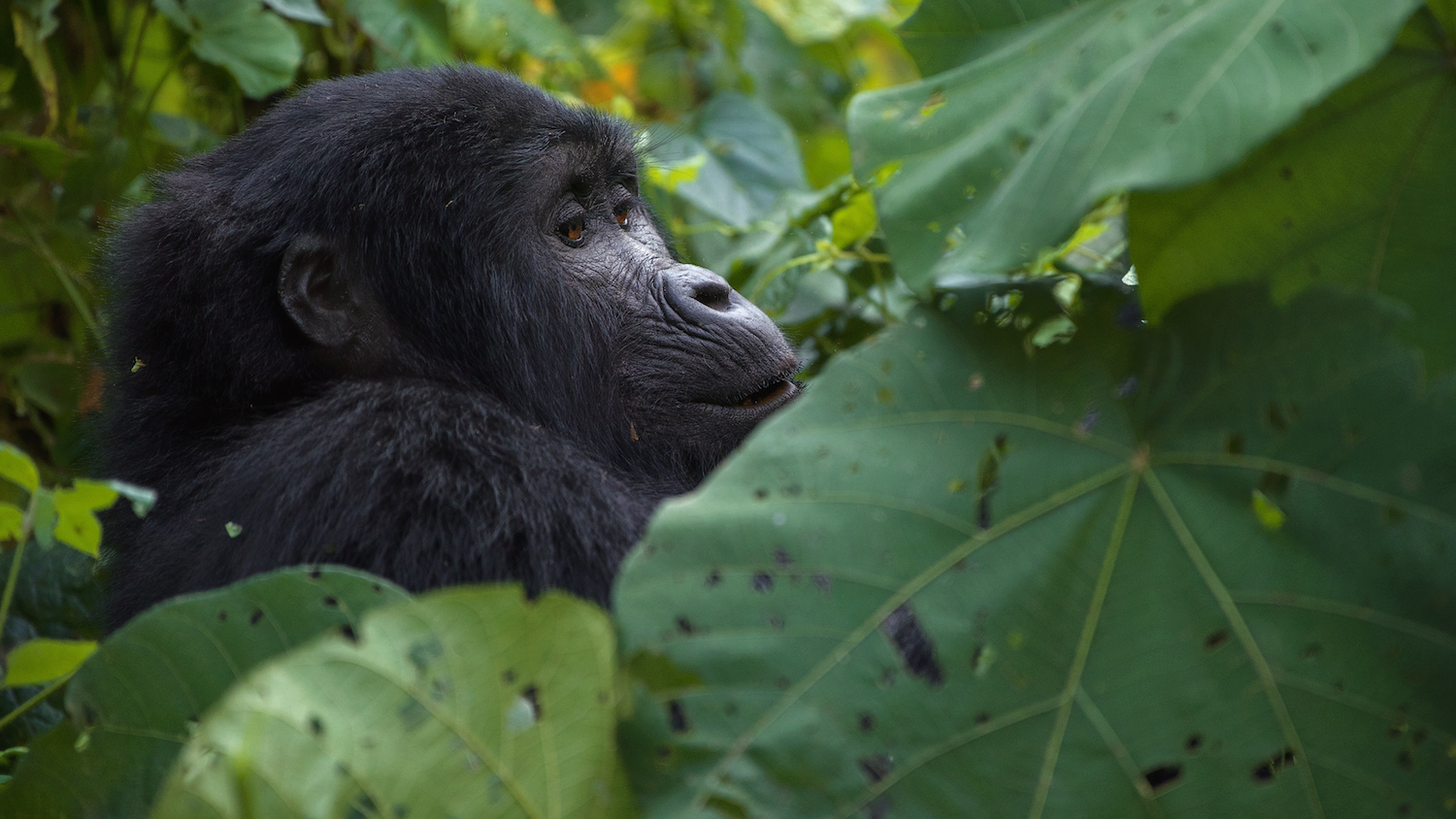
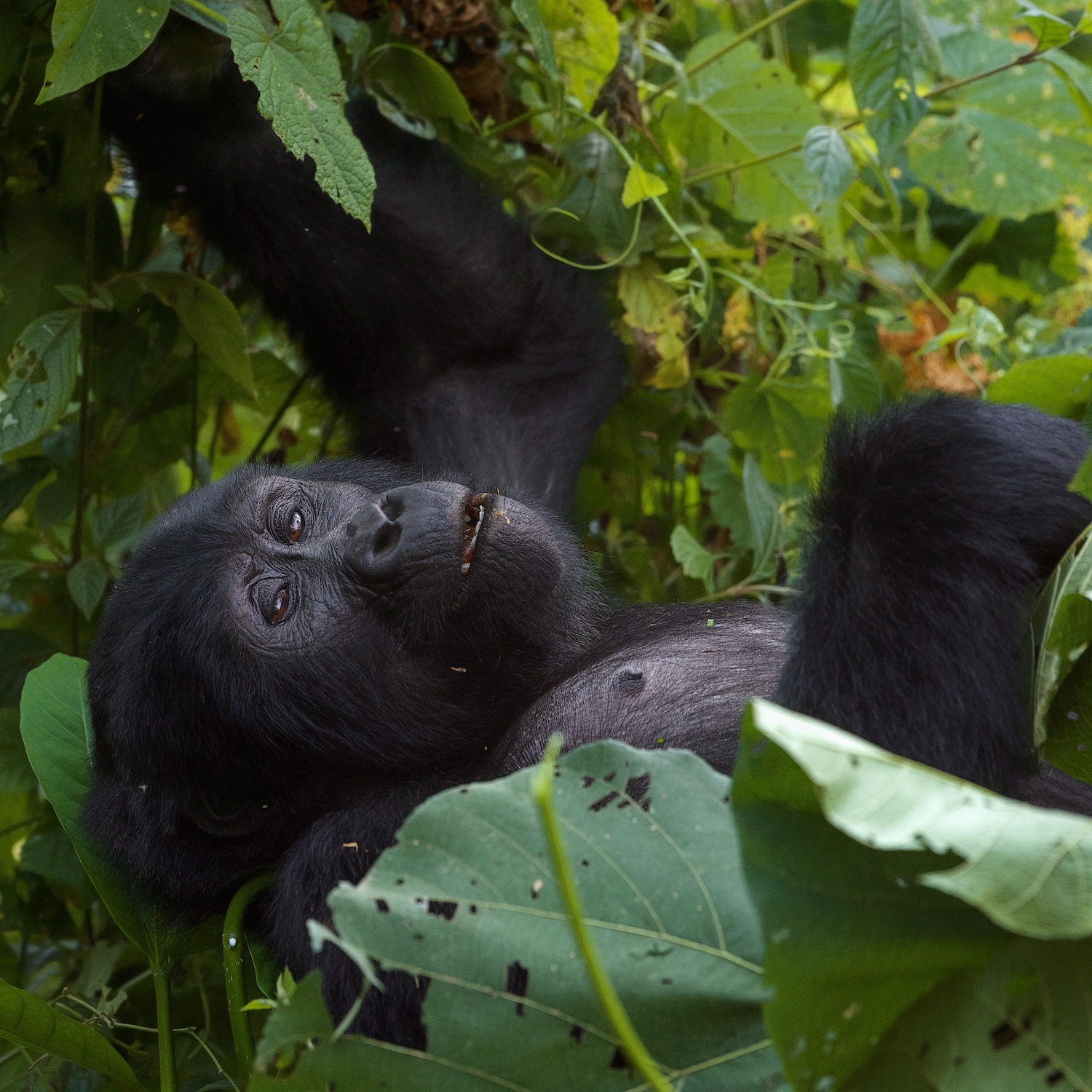



Banshekura takes a rest after eating breakfast. Her name means "reliever"
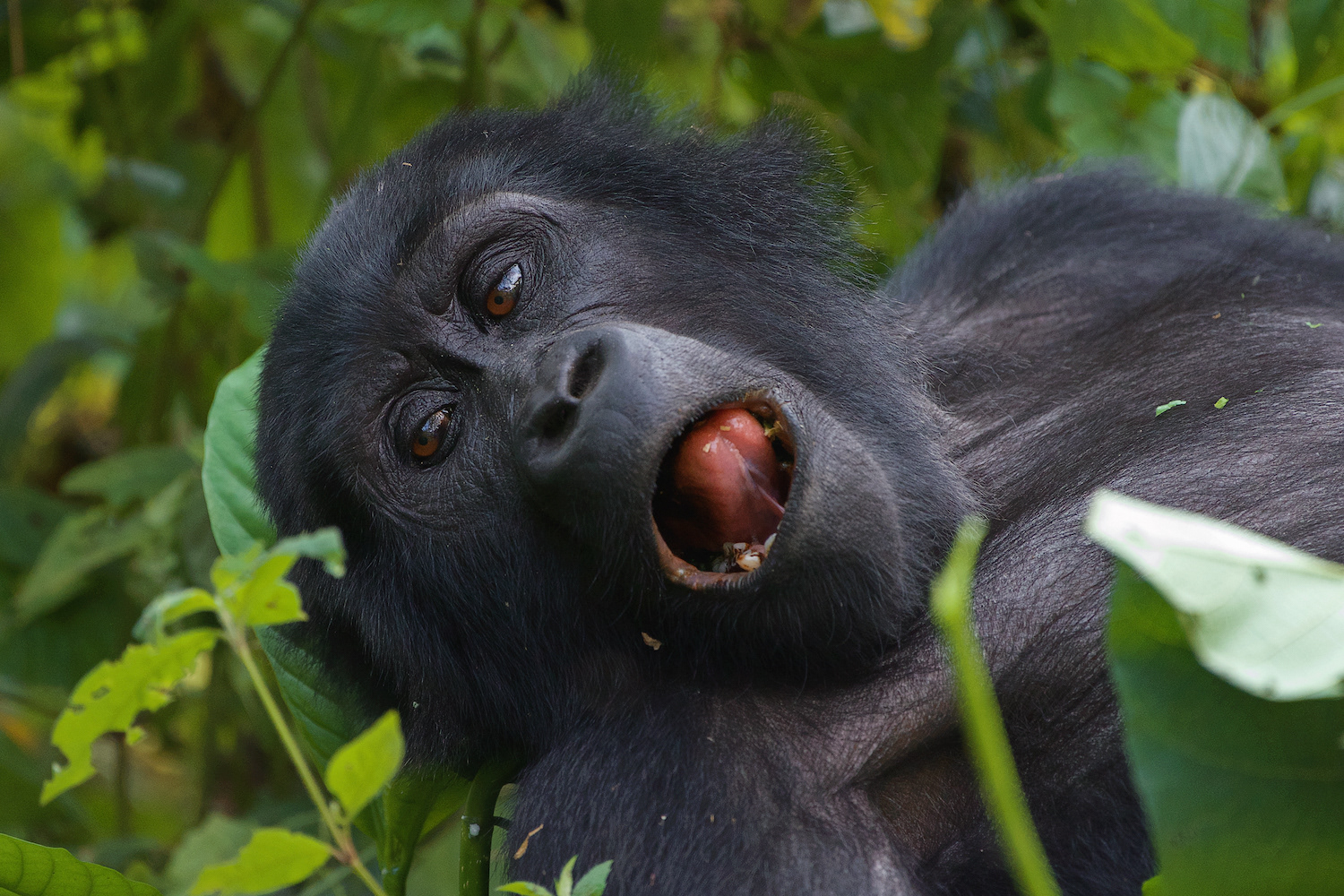
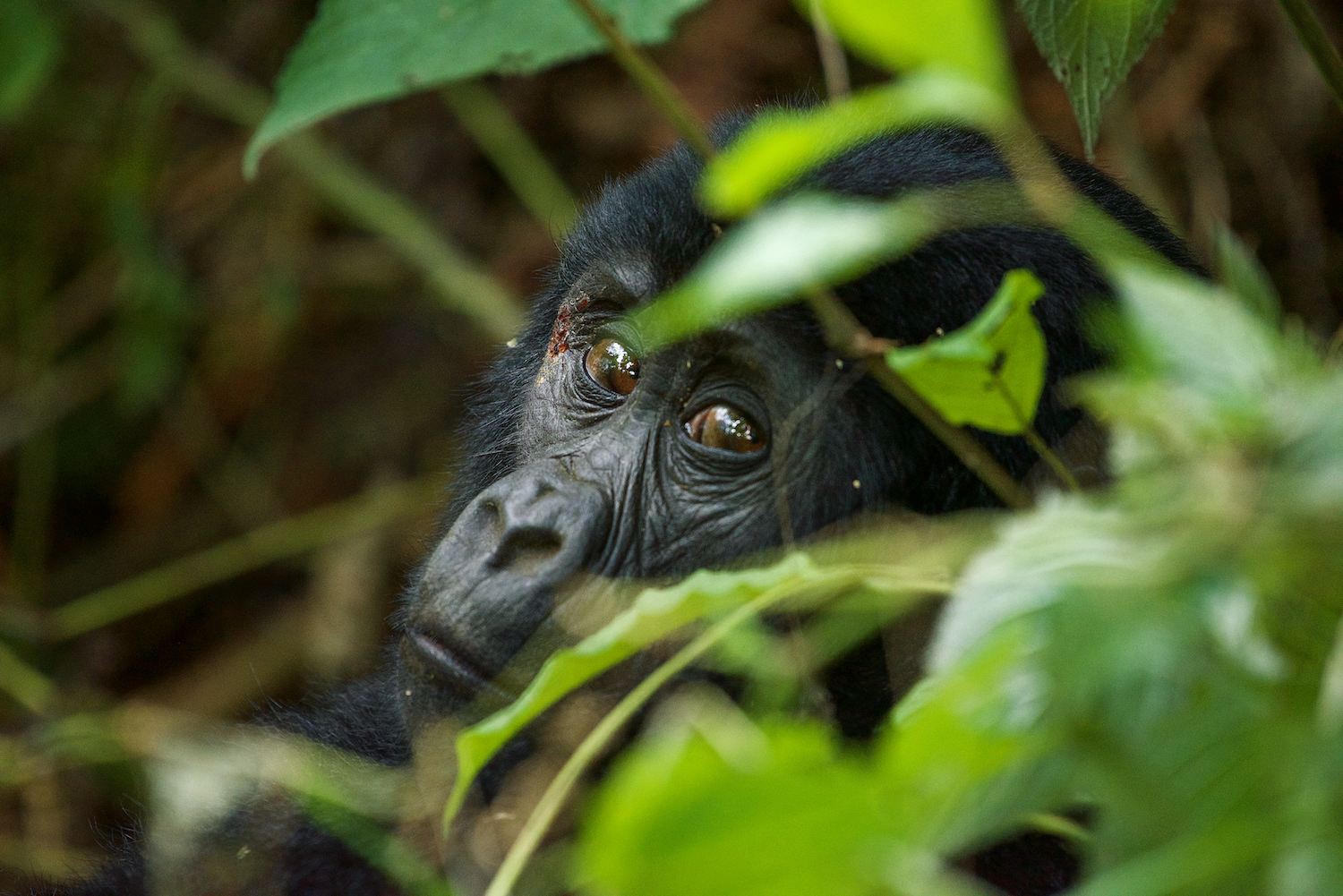


Mishayu, a juvenile female is six years old, born 1st August 2016.
The biggest threat to the Gorilla species is the loss of their natural habitat due to human activities such as construction, agriculture and grazing of livestock, all of which results in deforestation. Today, the Mountain Gorilla is considered critically endangered, however, thanks to the great conservation efforts of the Wildlife Authorities of Uganda, Rwanda and the Democratic Republic of the Congo, the poaching of Gorillas is now much less than in the past and there has been an increase in Mountain Gorilla numbers from 850 back in the1990s to just over 1,000 today.
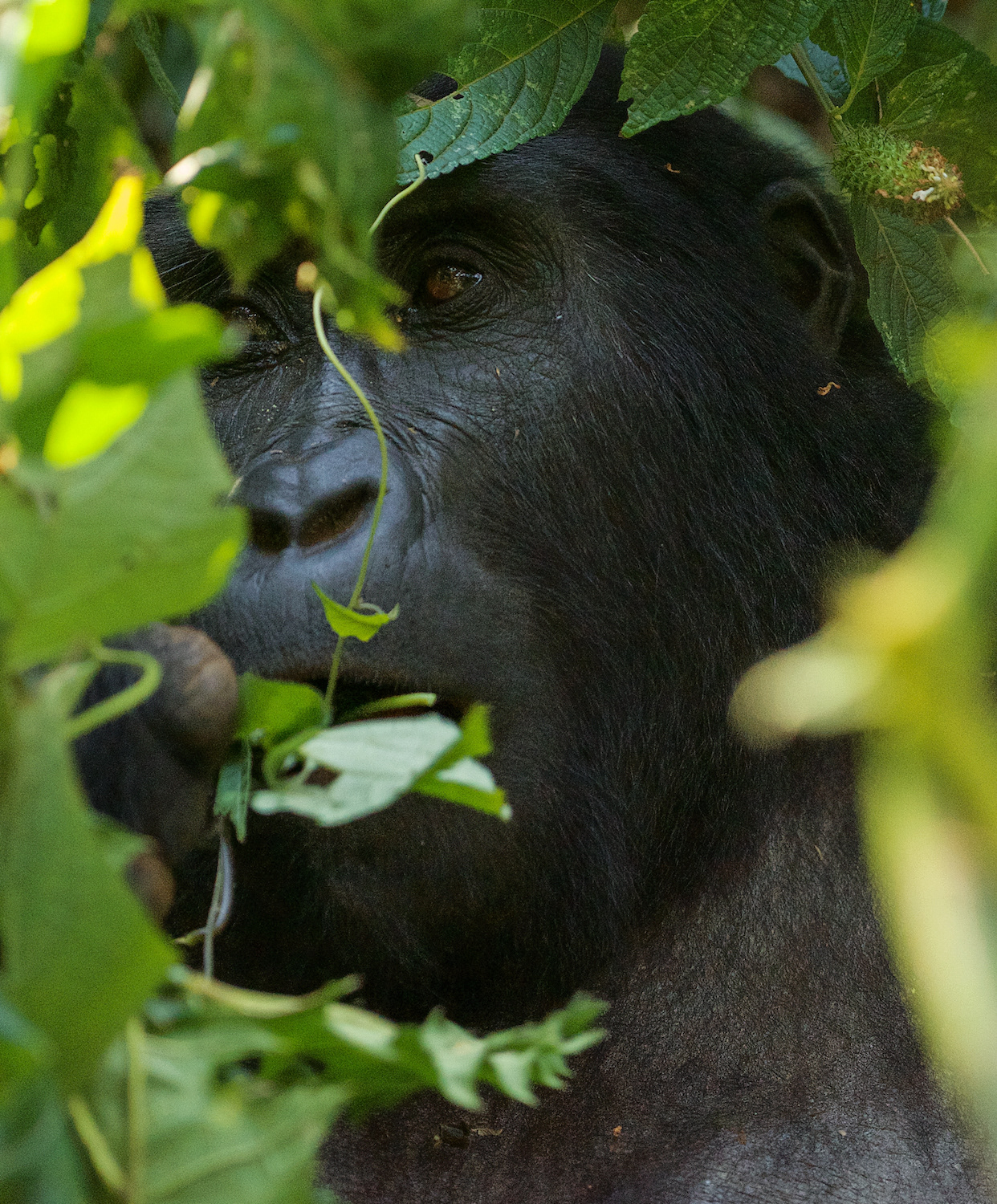
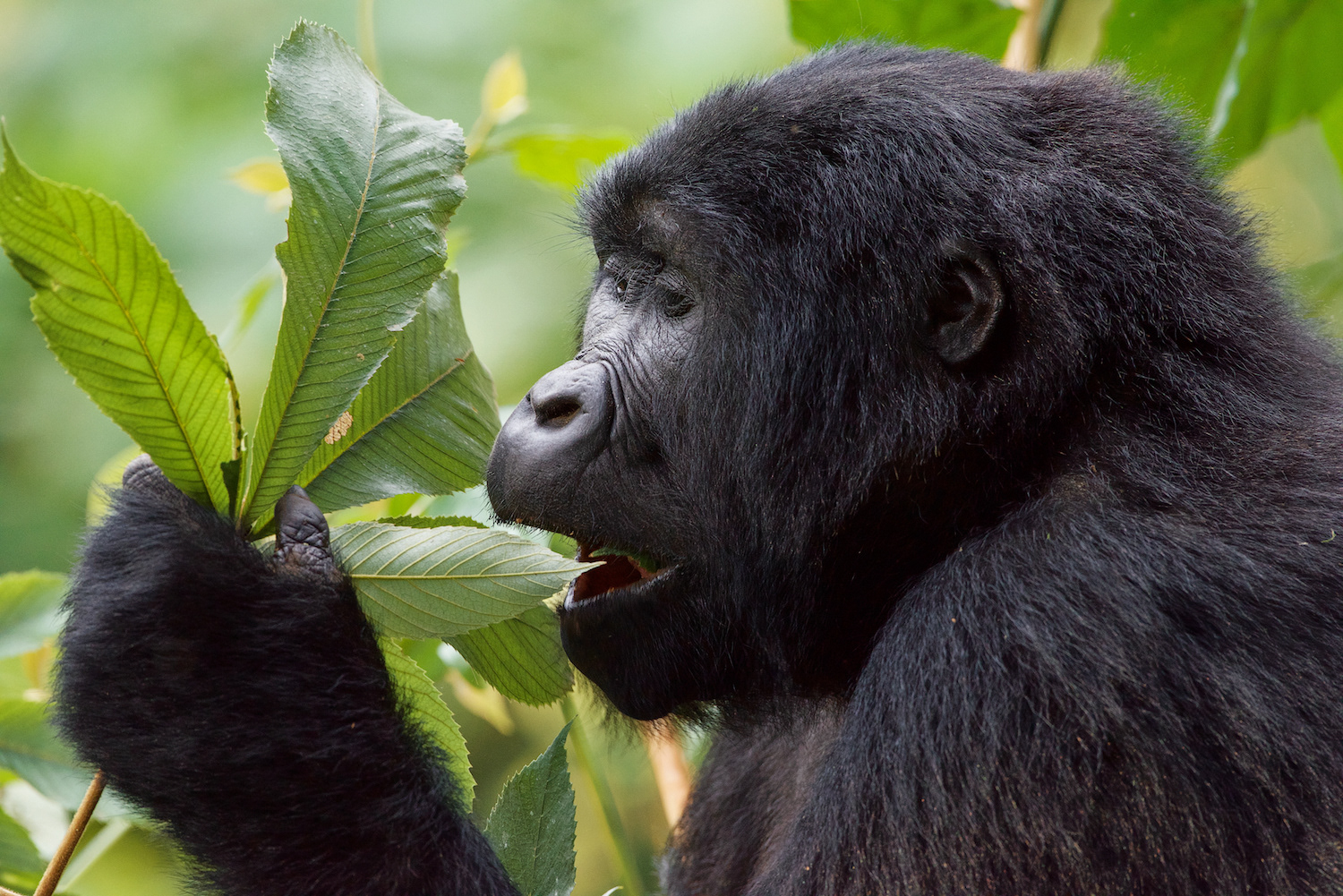
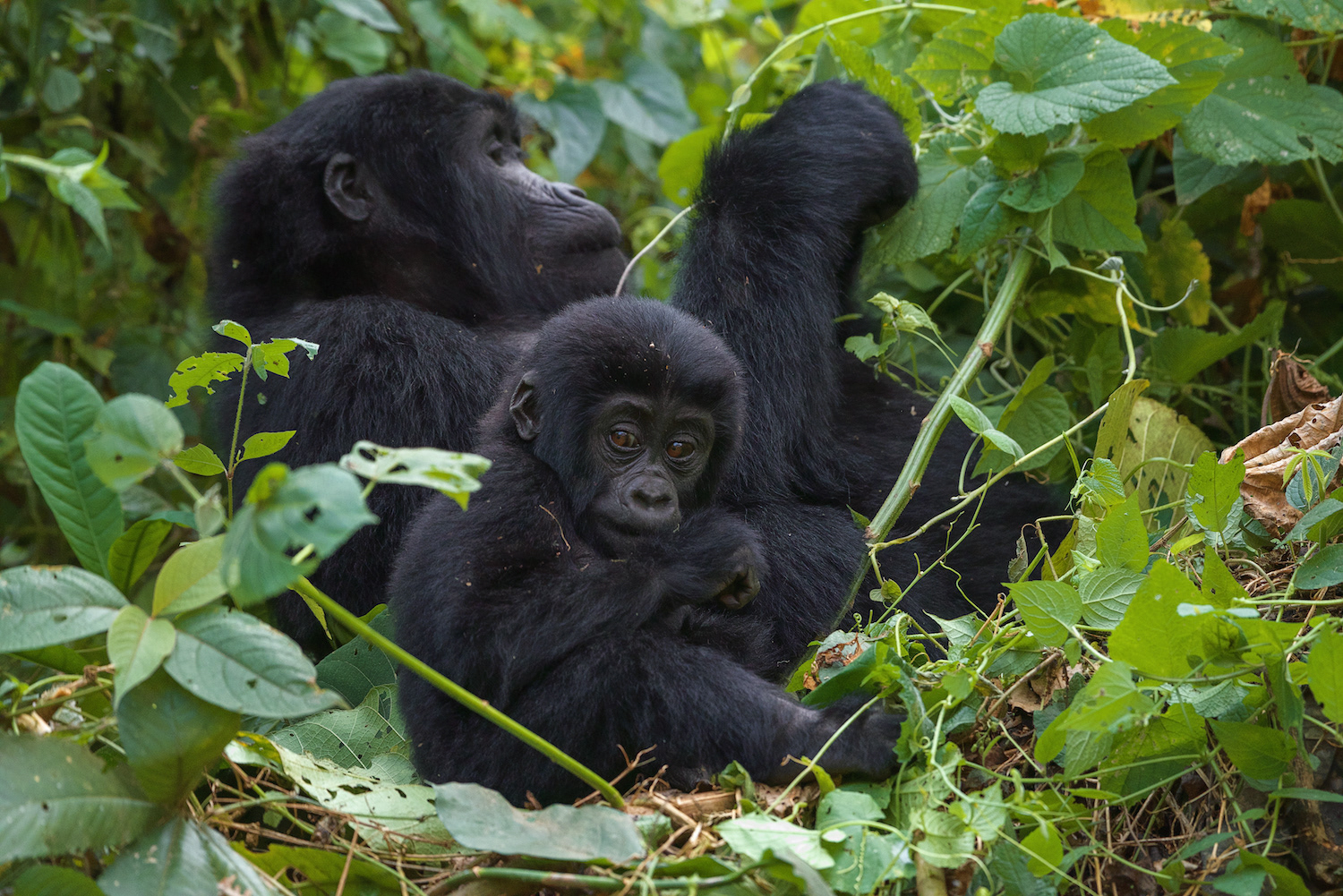

An early start and a trek through the dense rainforest was totally worth it for the privilege of coming face-to-face with Gorillas in the wild. The hour we spent watching these fascinating animals up close in their natural environment was an amazing experience. Our thanks must go to our Forest Ranger, Omax Kamusiime, together with all the trackers, guides and porters who accompanied us on our trek, for making this unforgettable experience possible.
Don & Anne Davies

